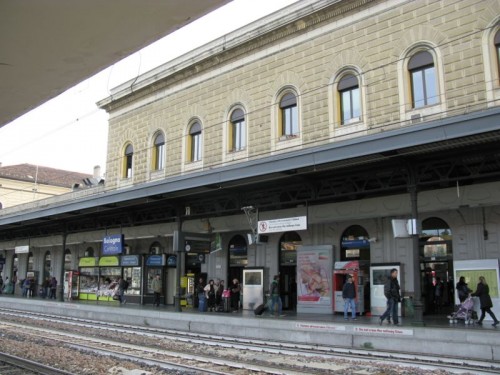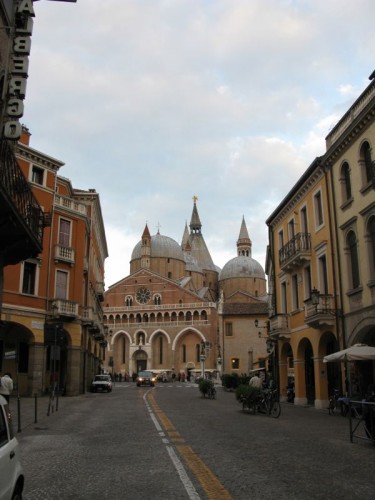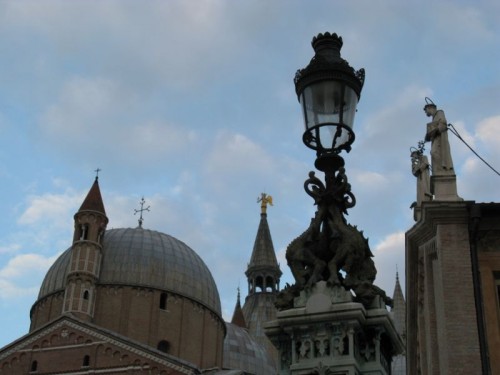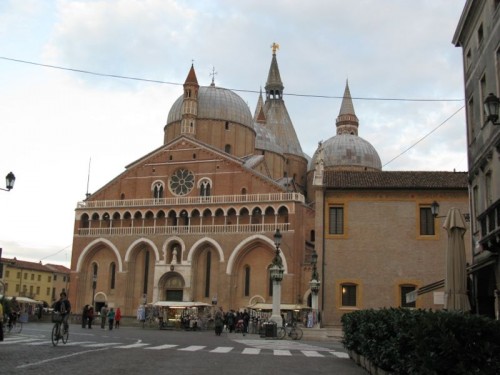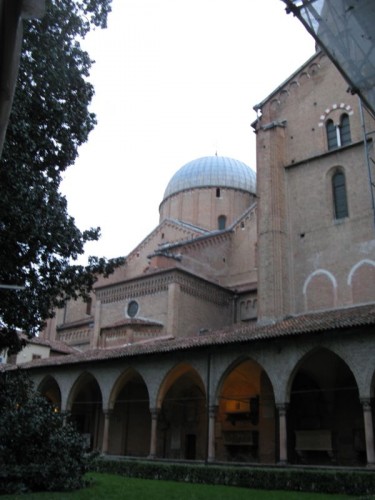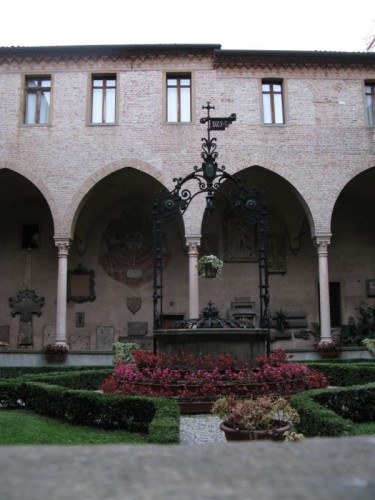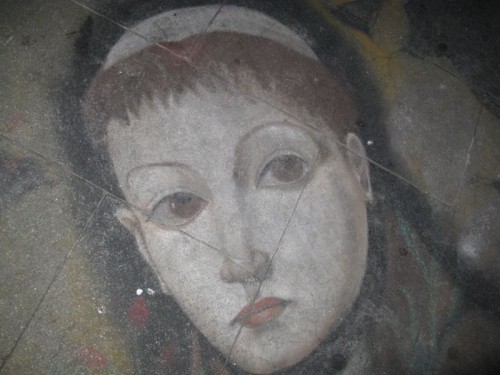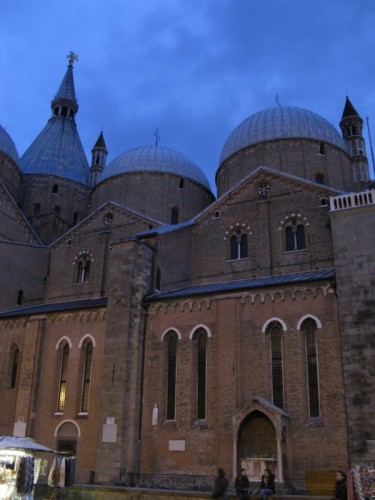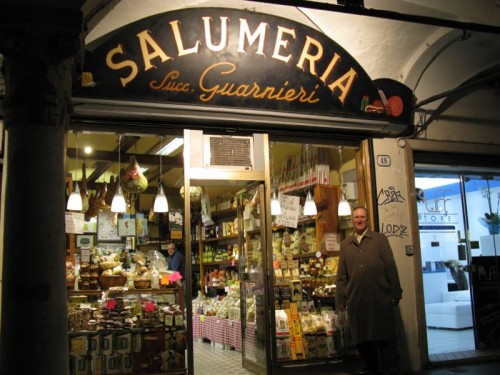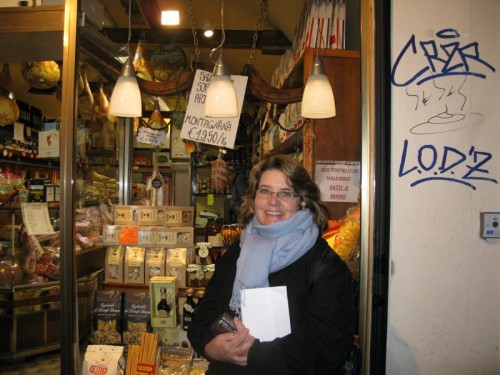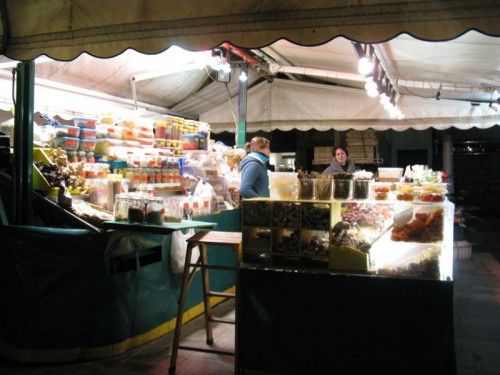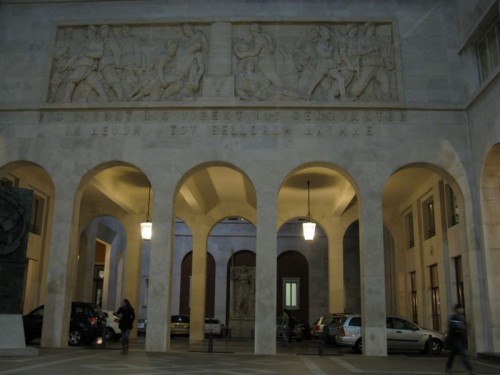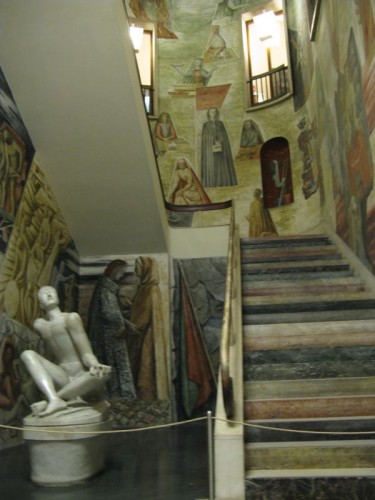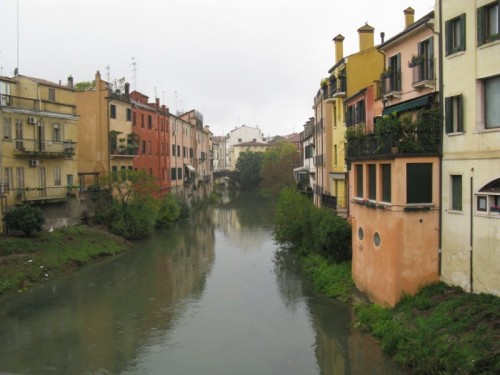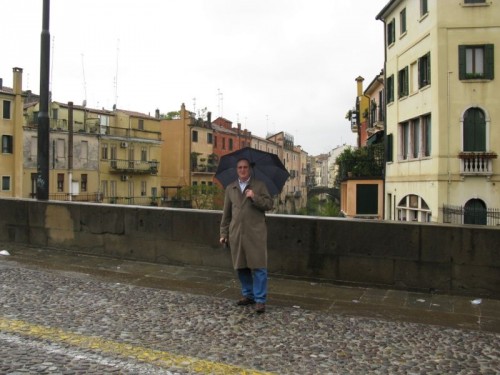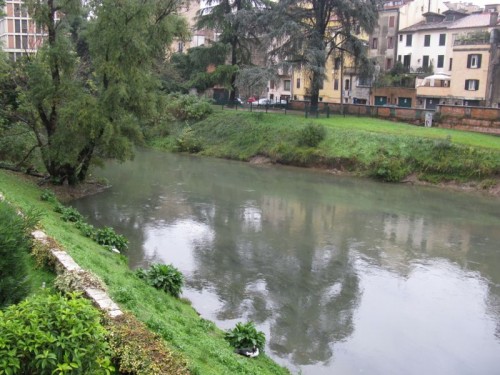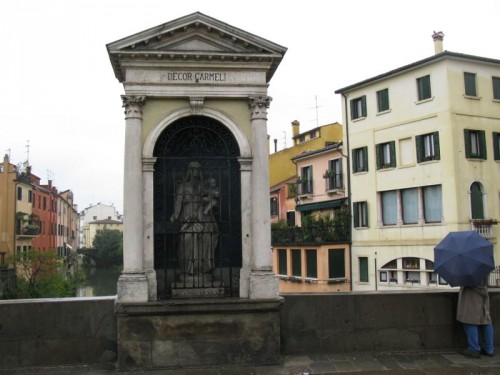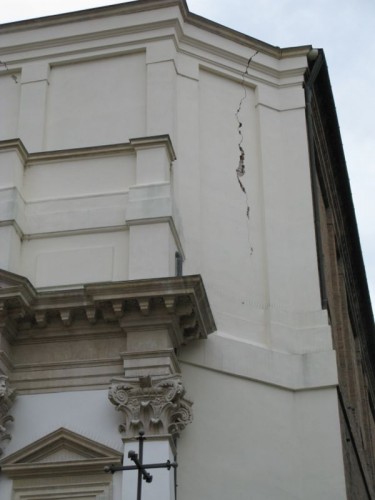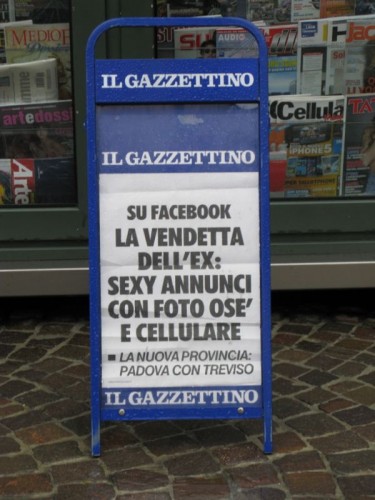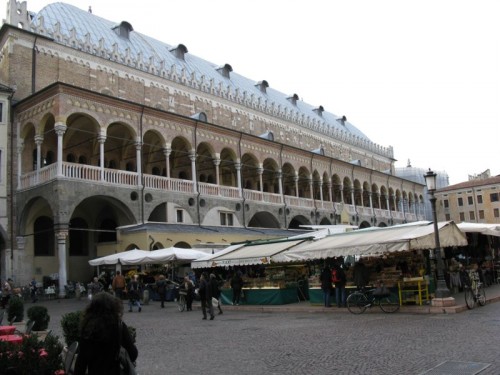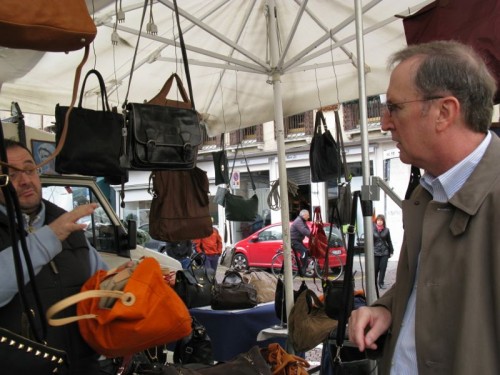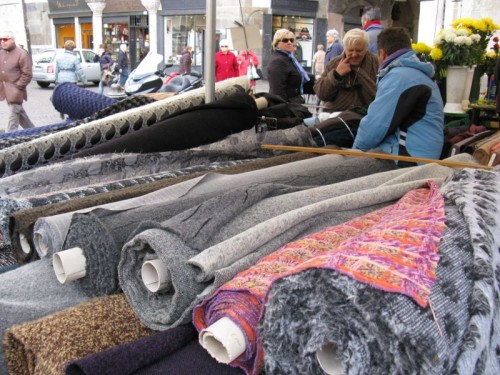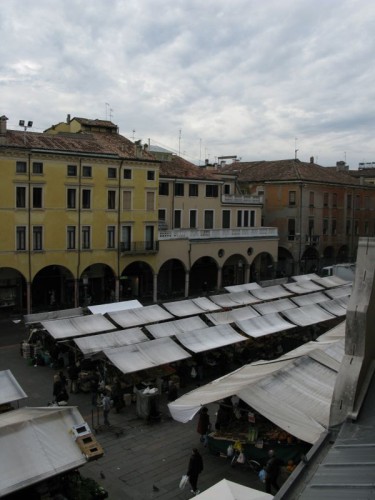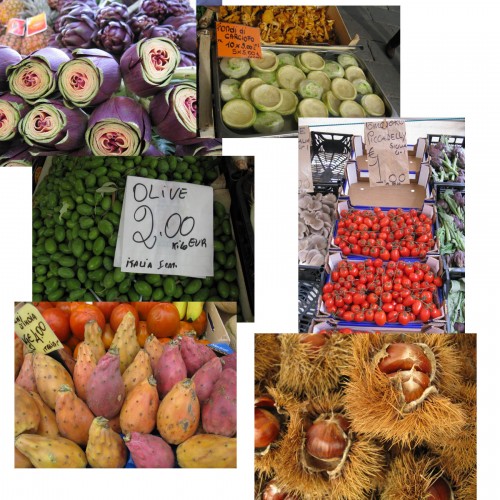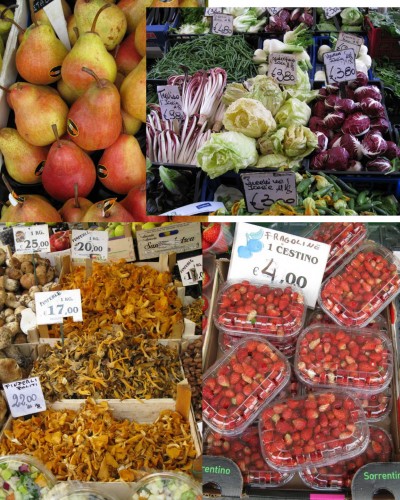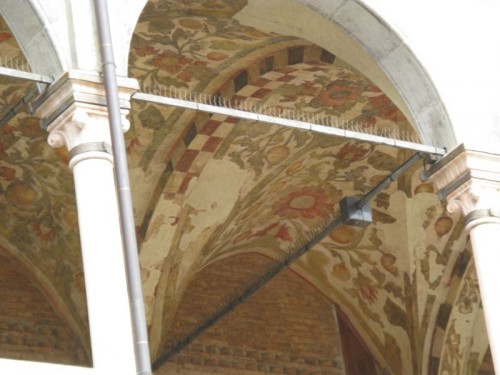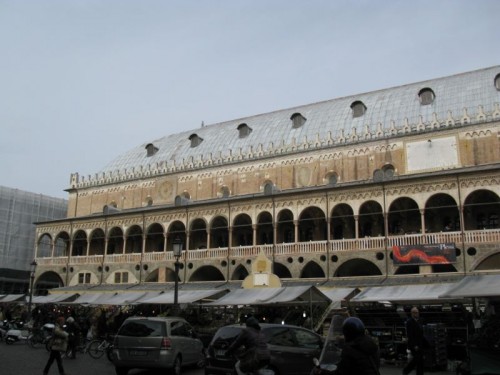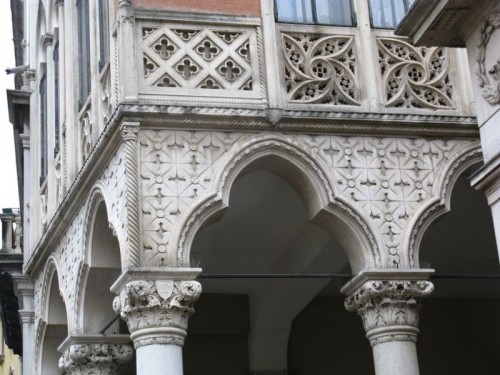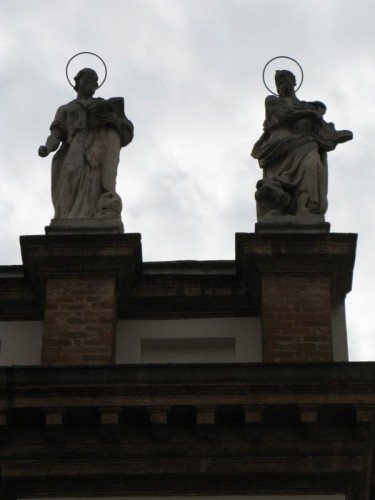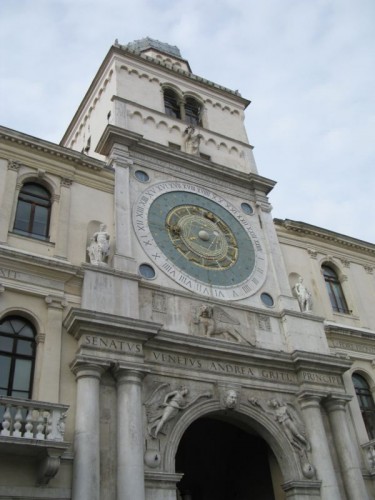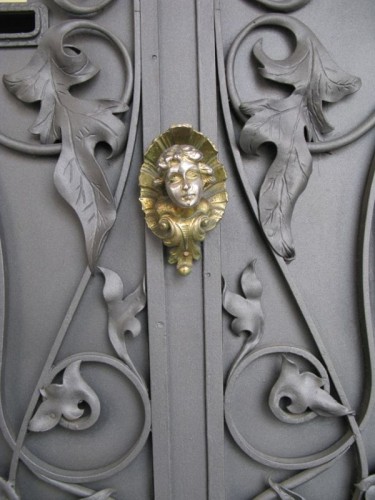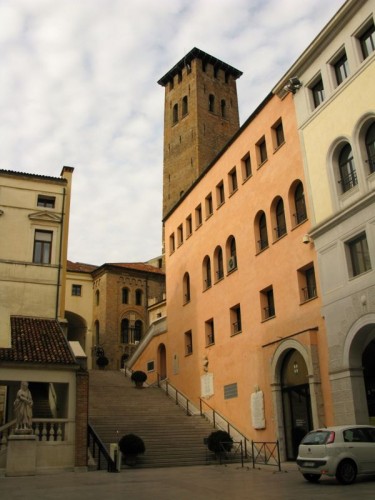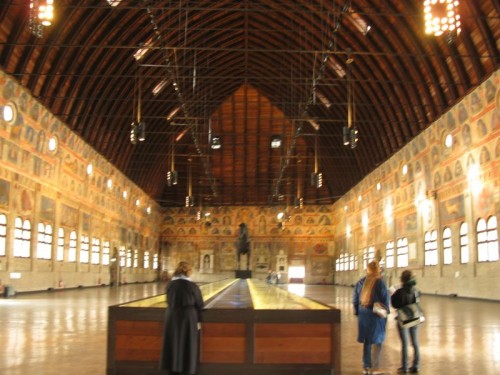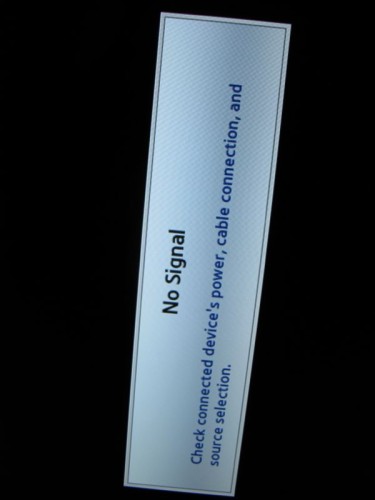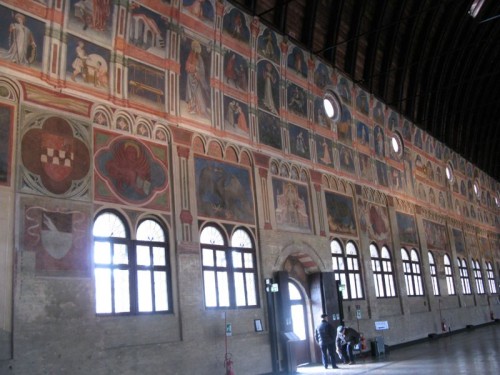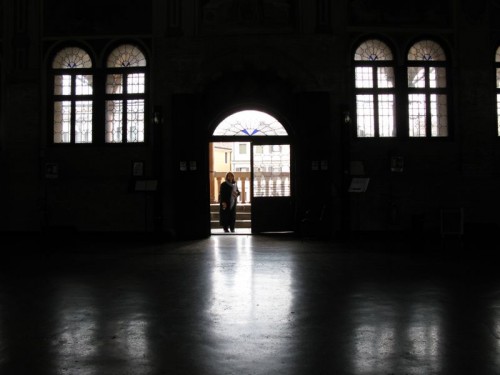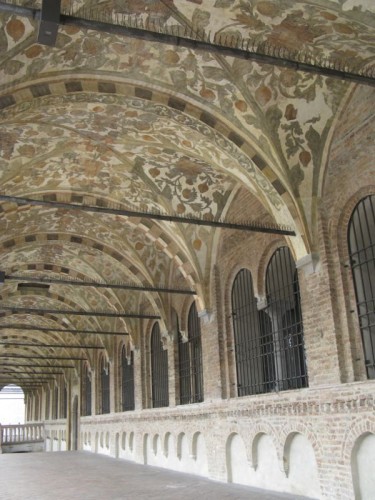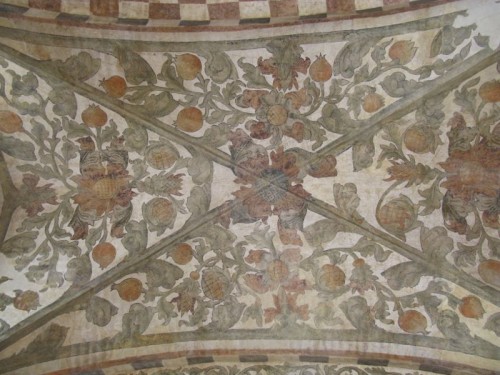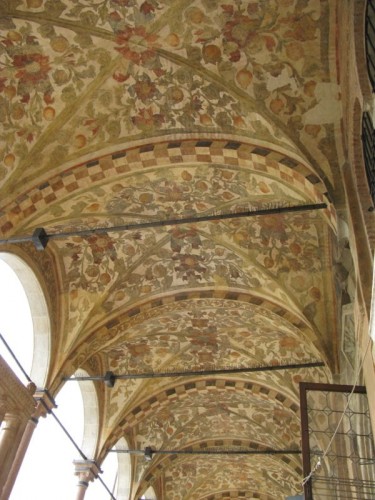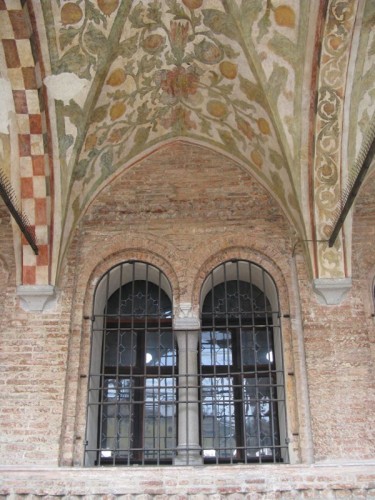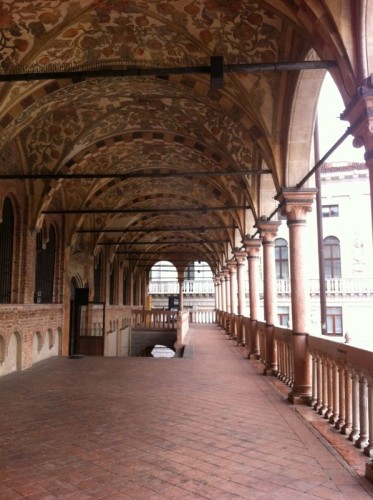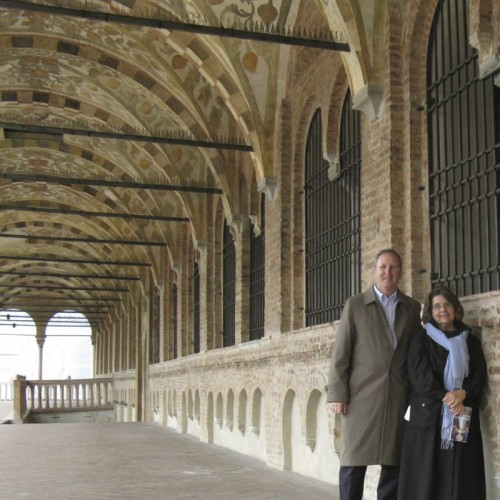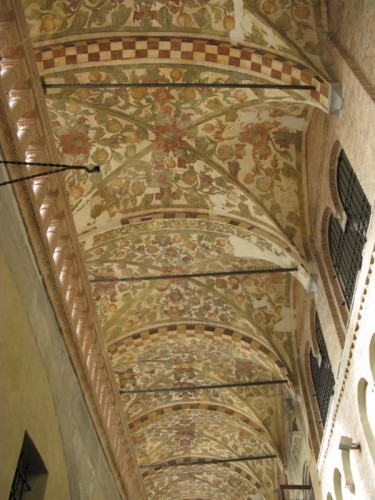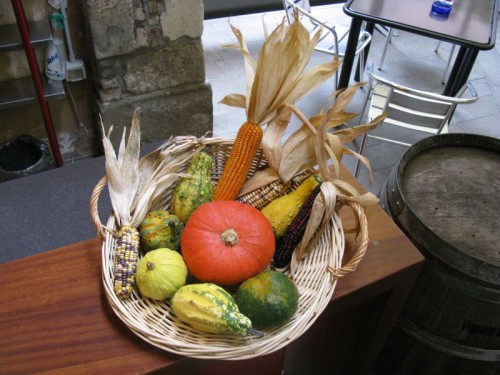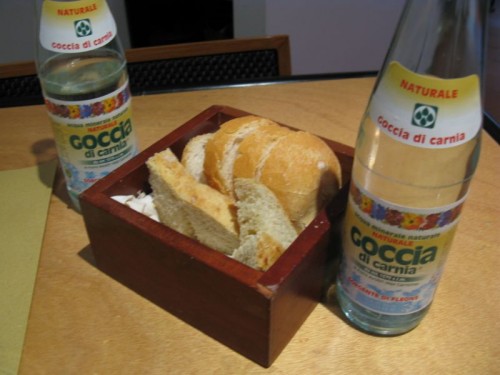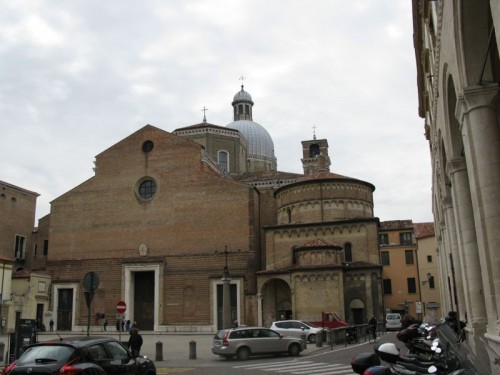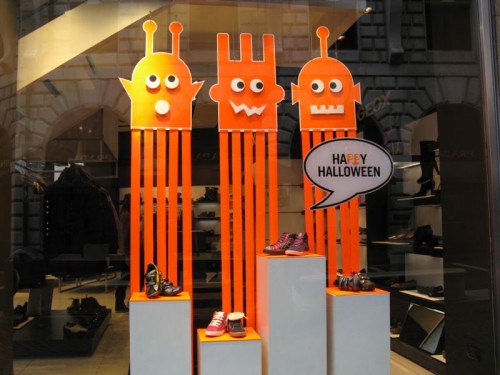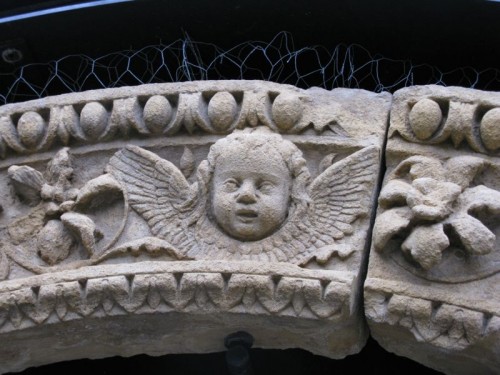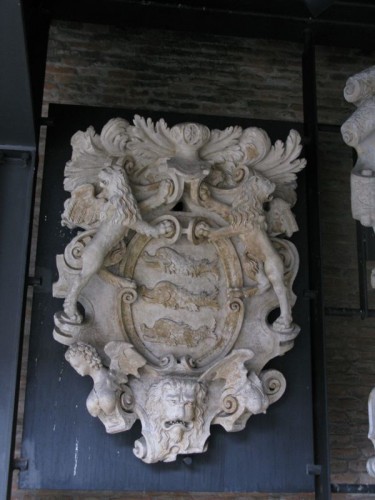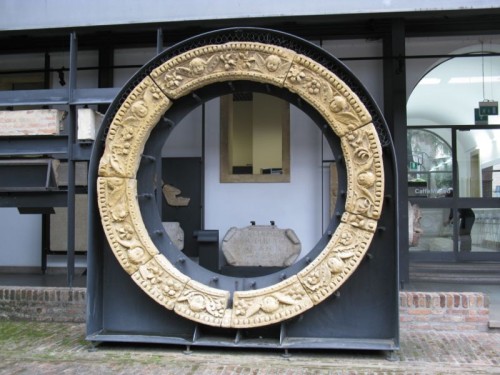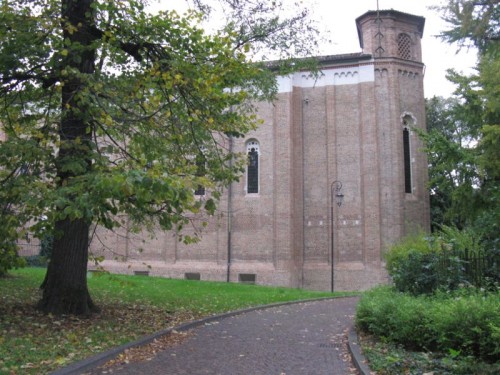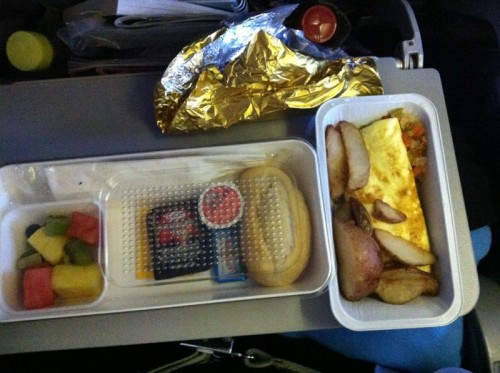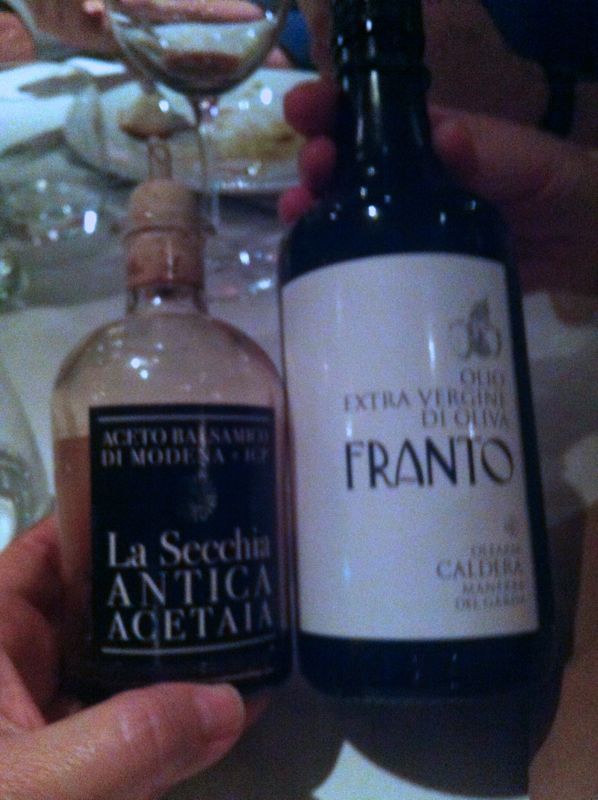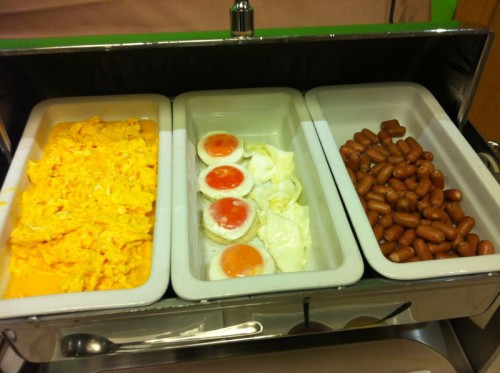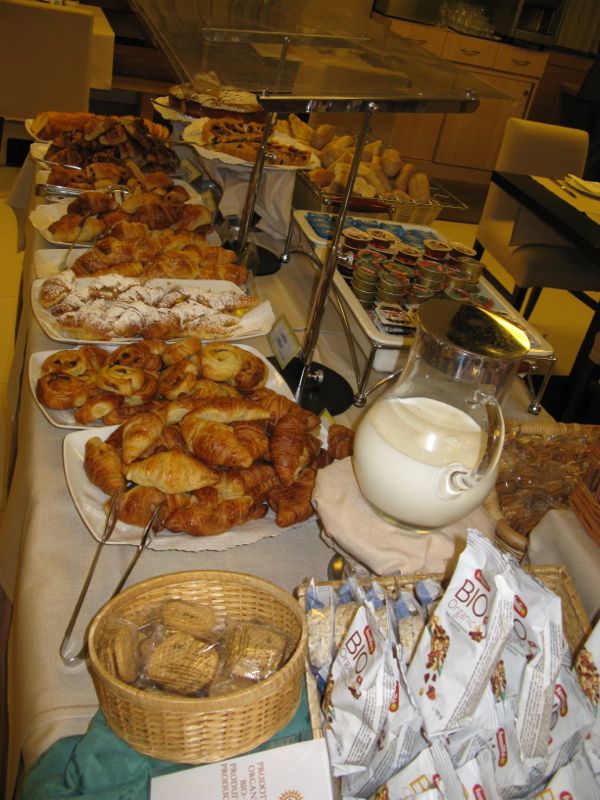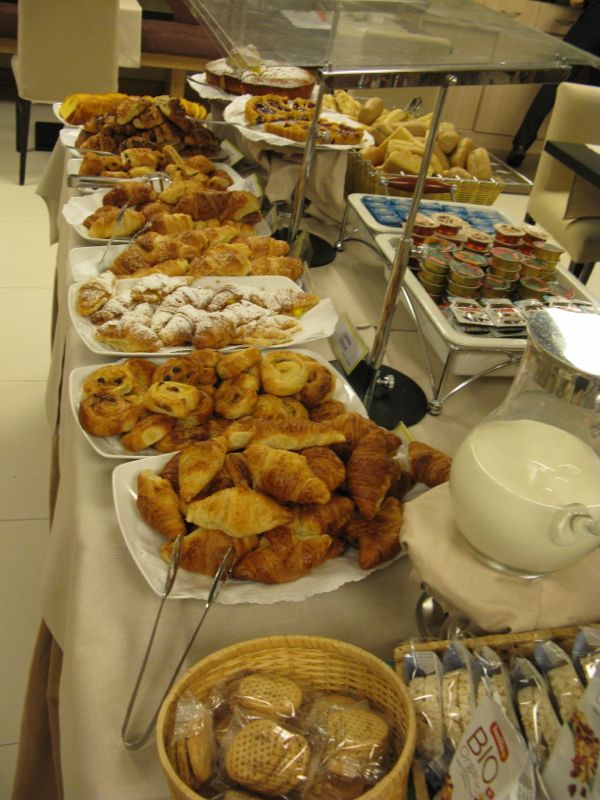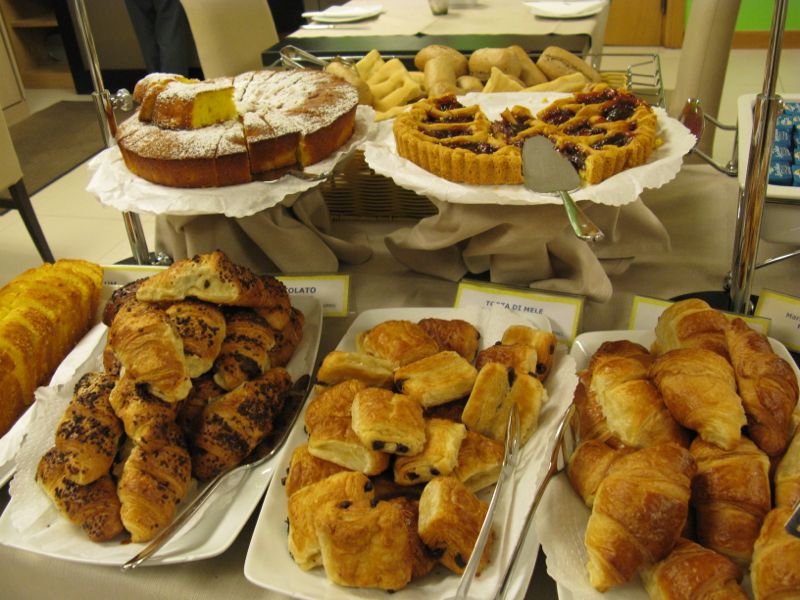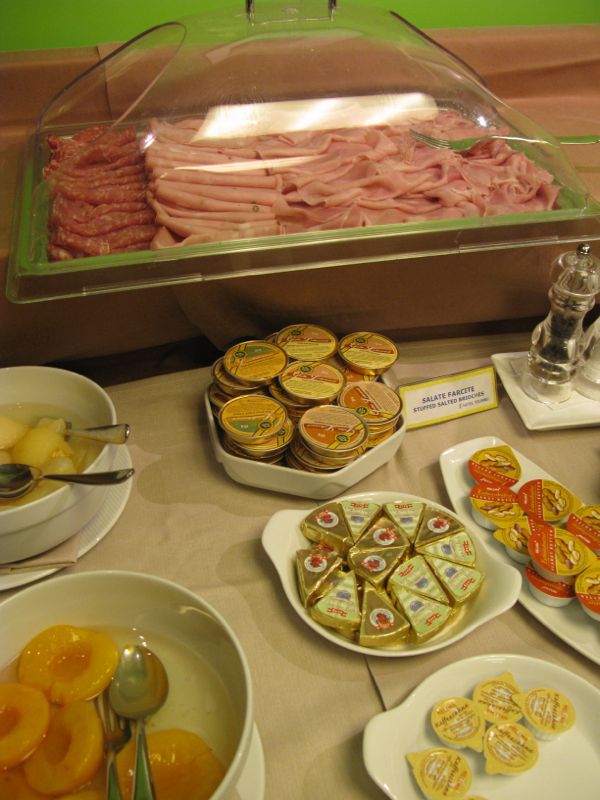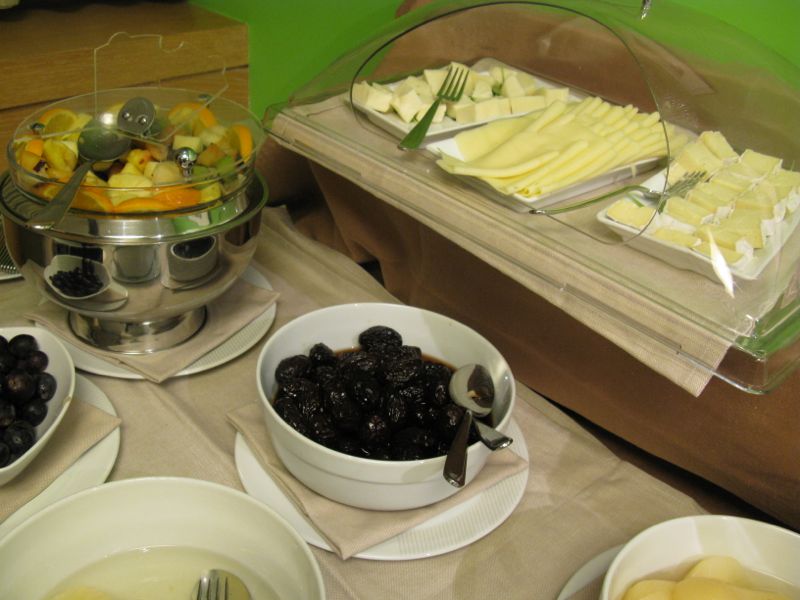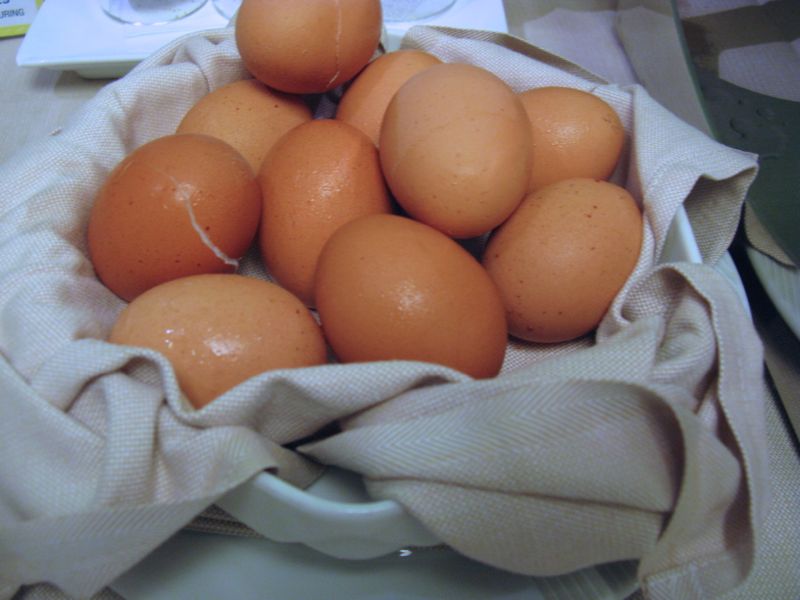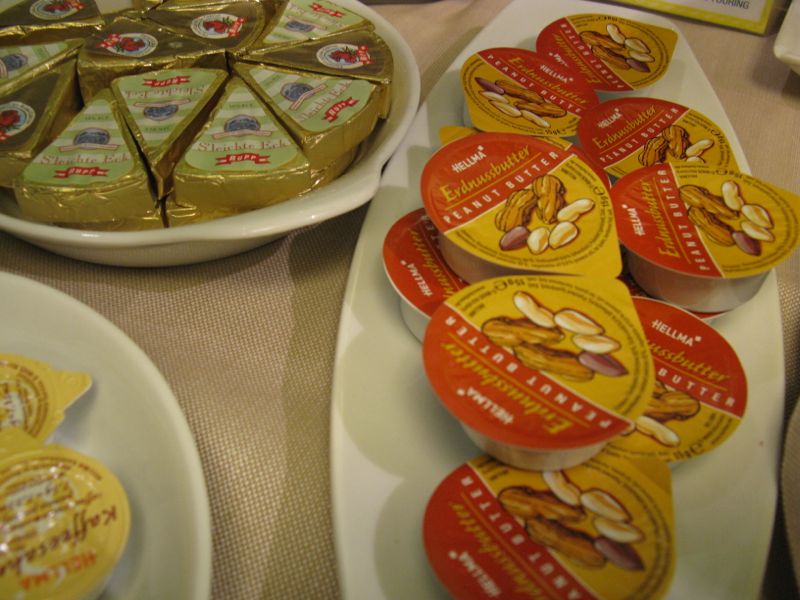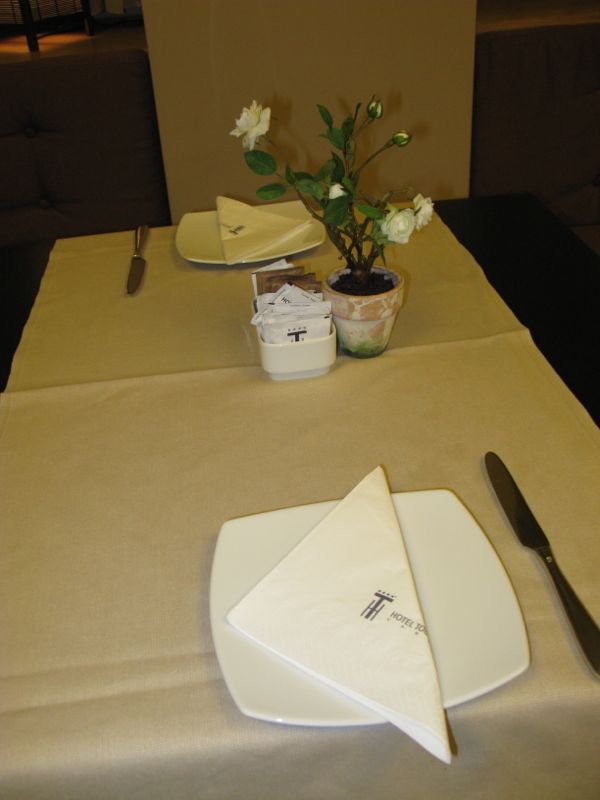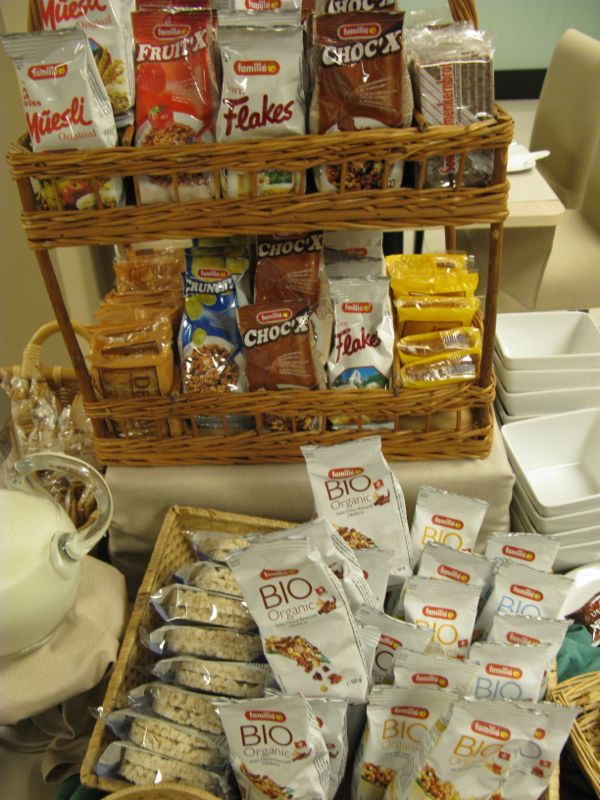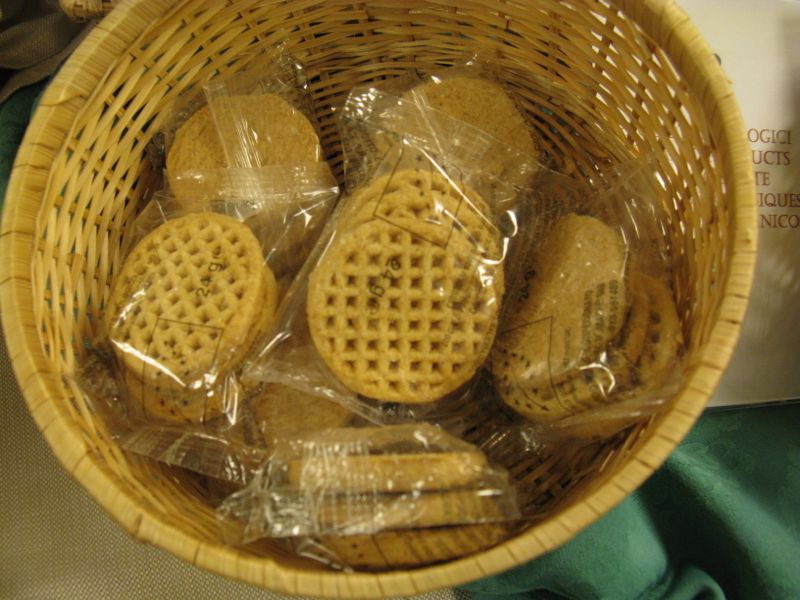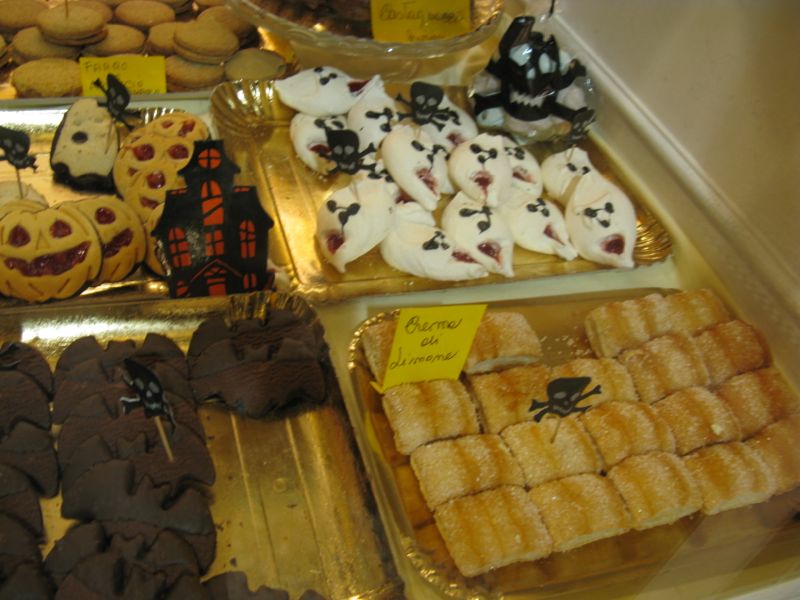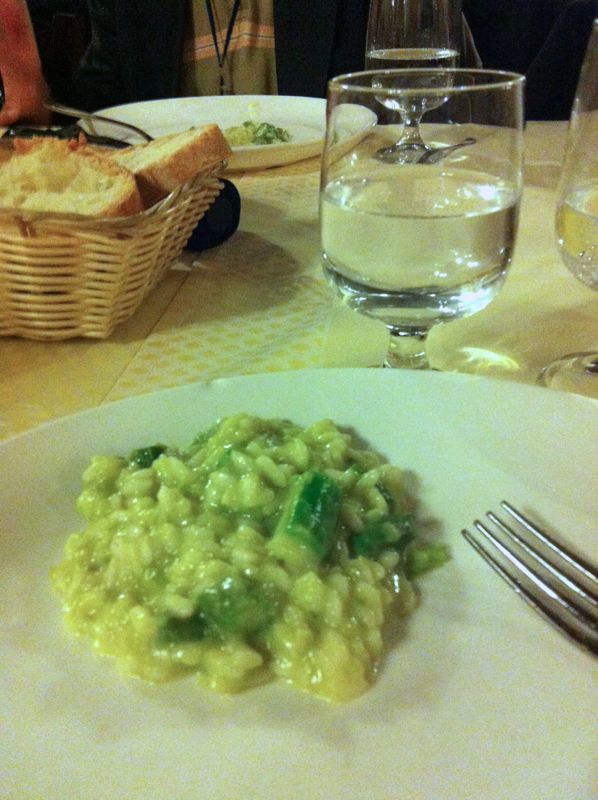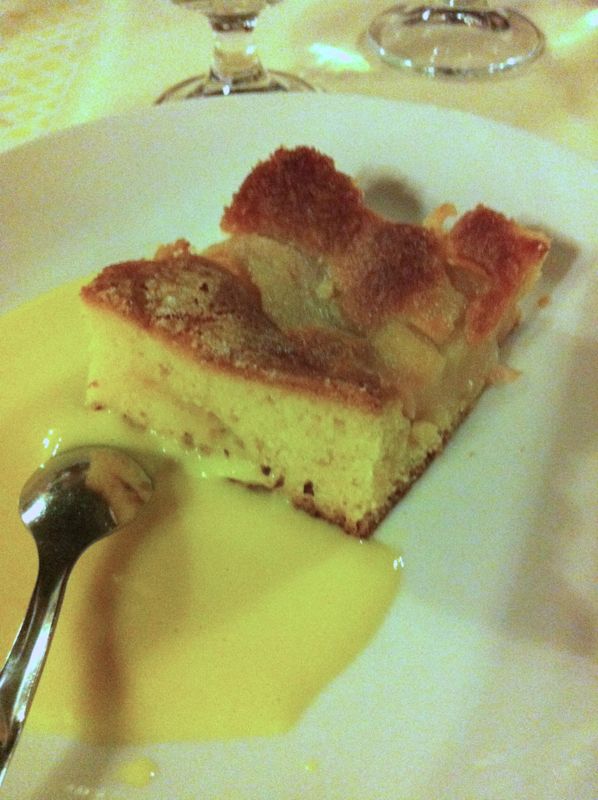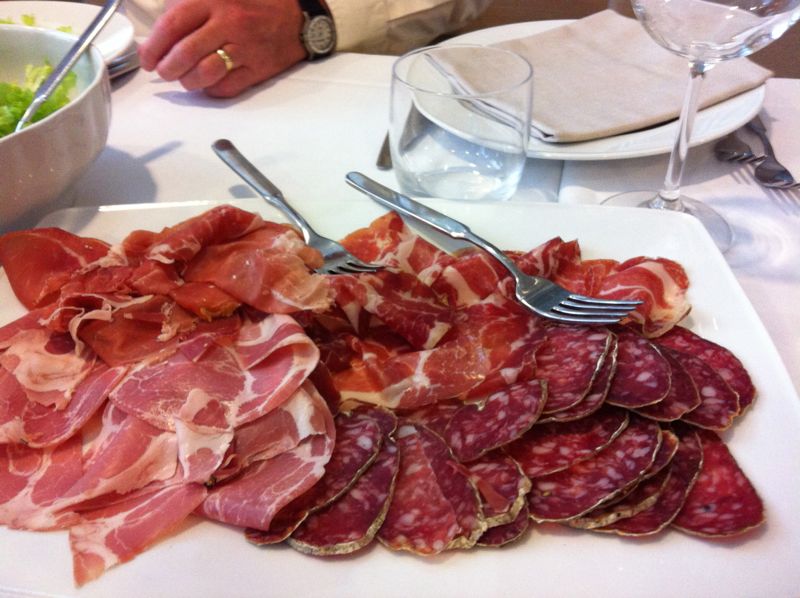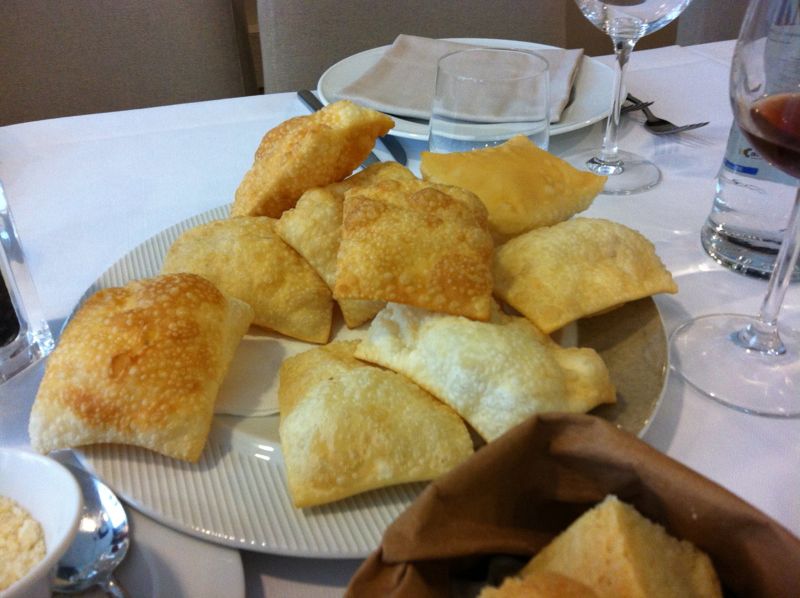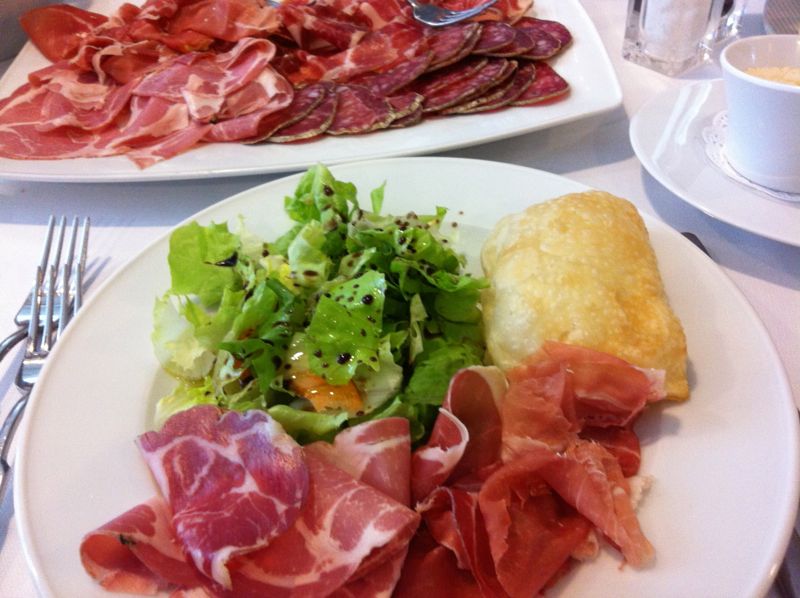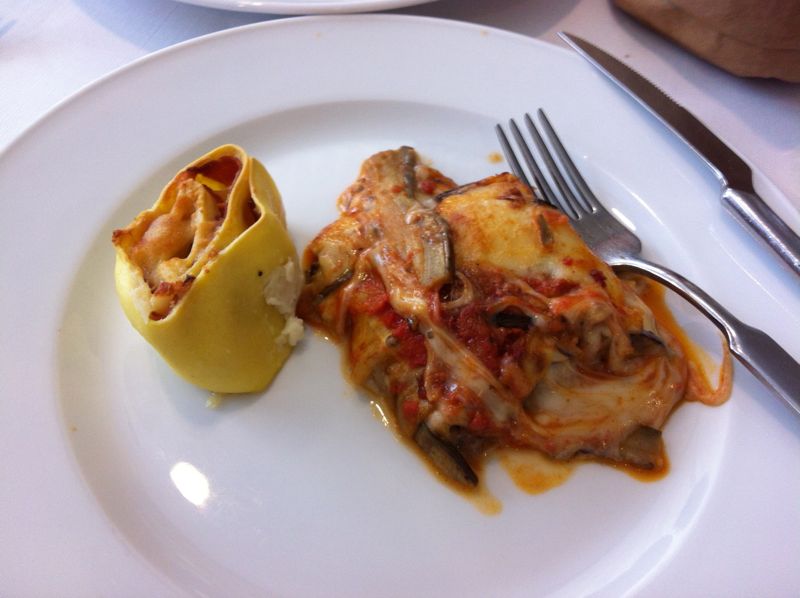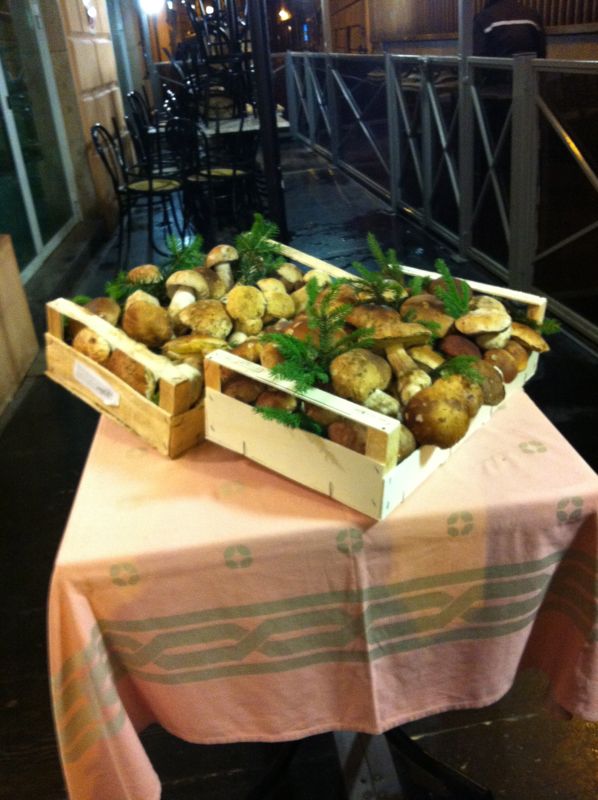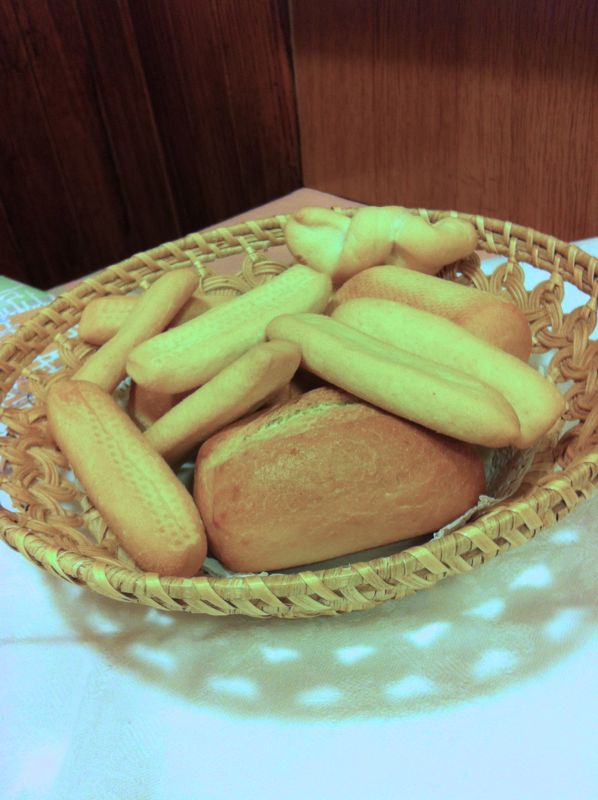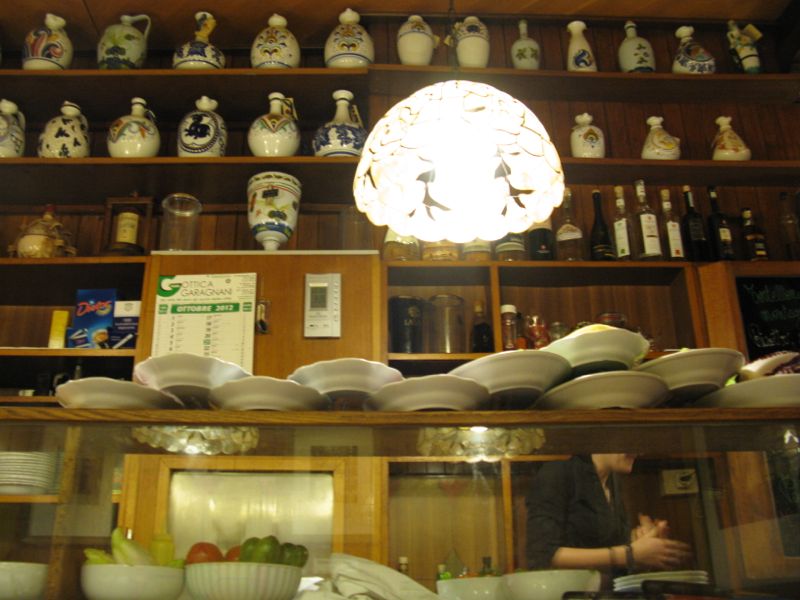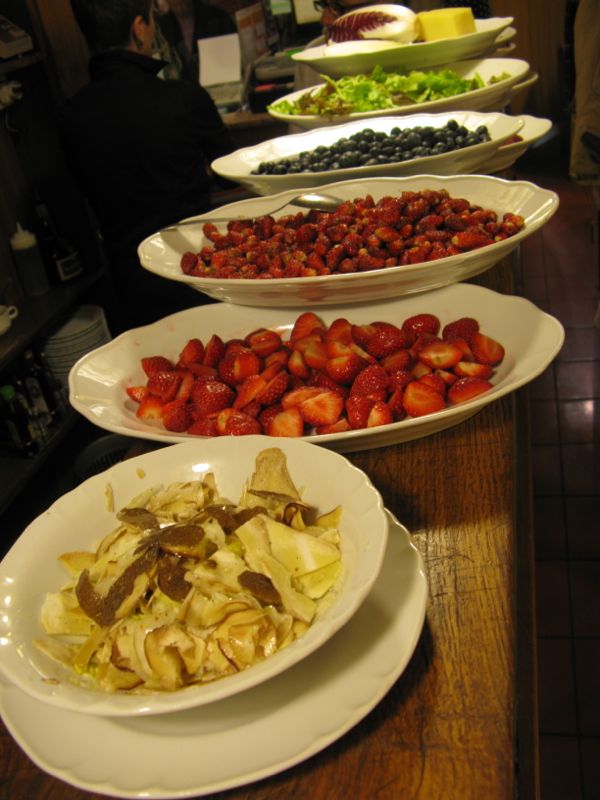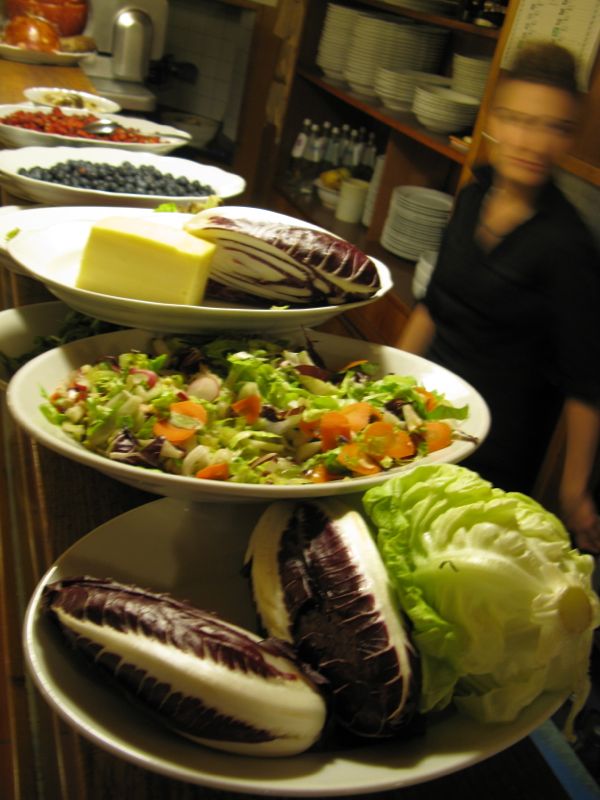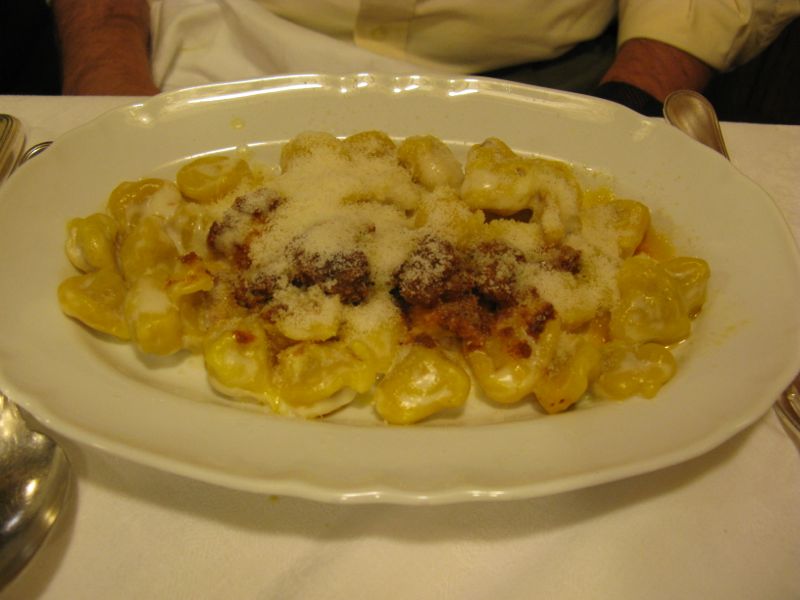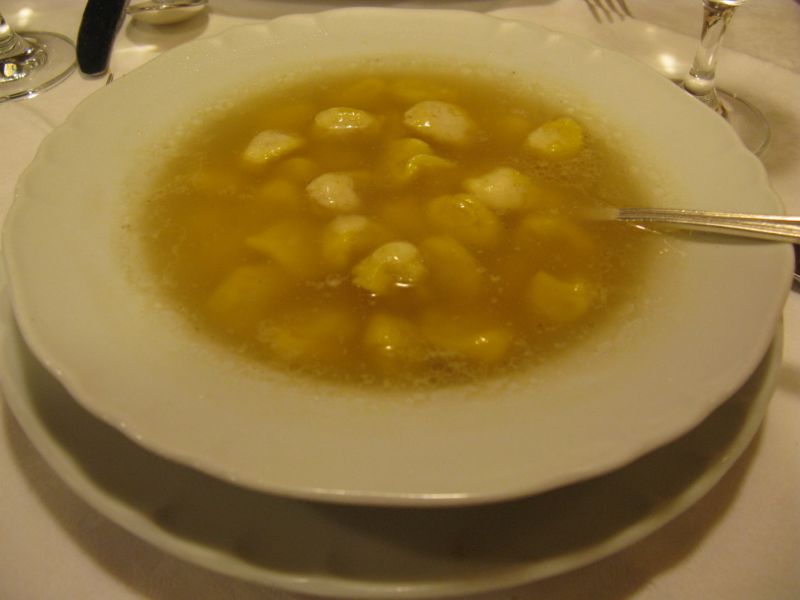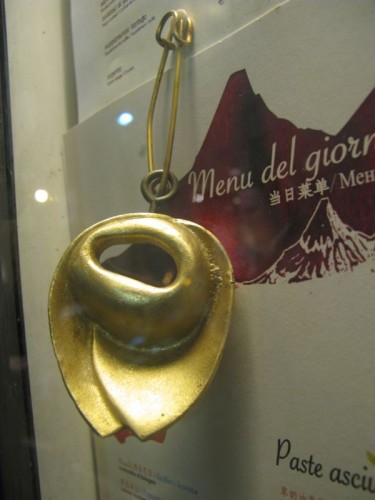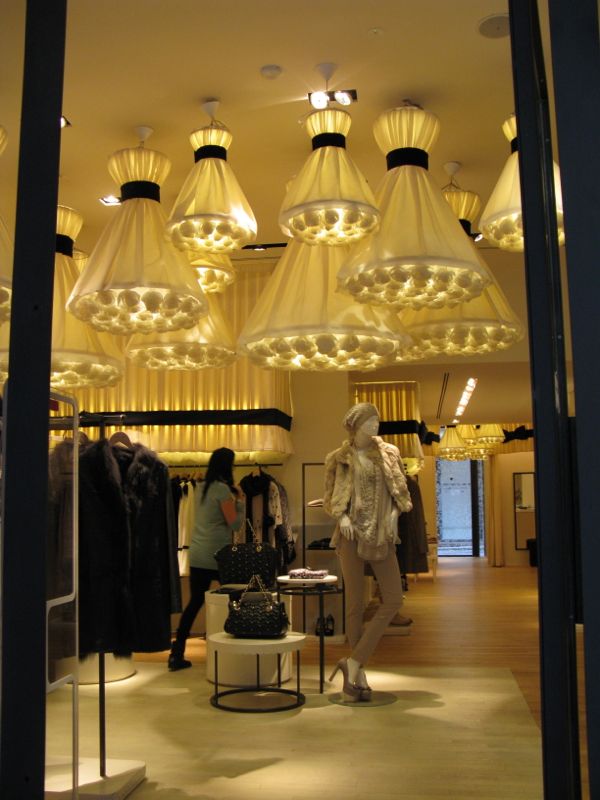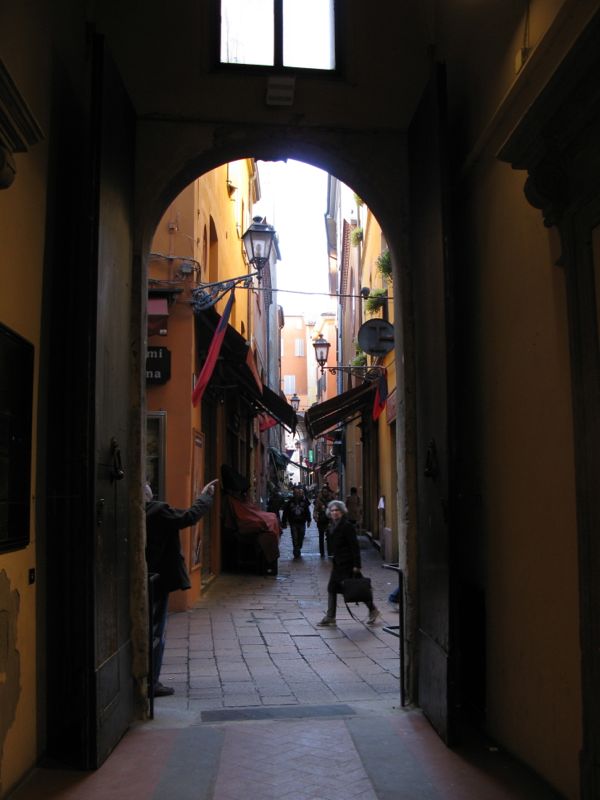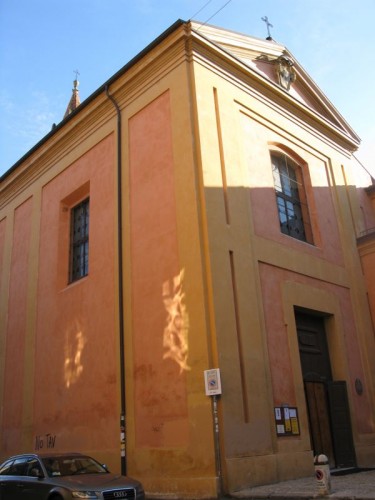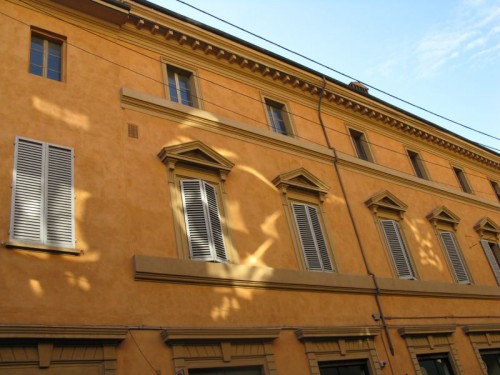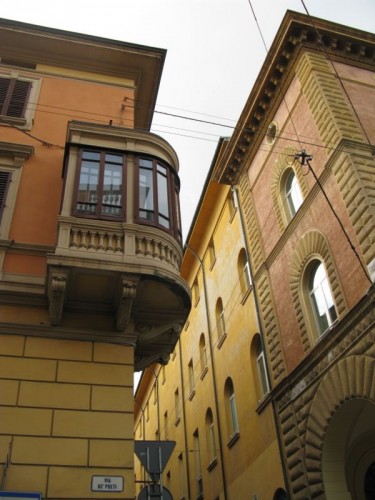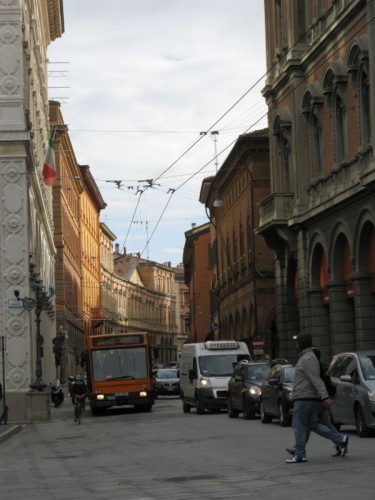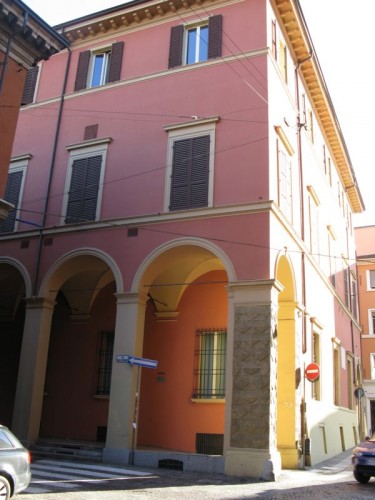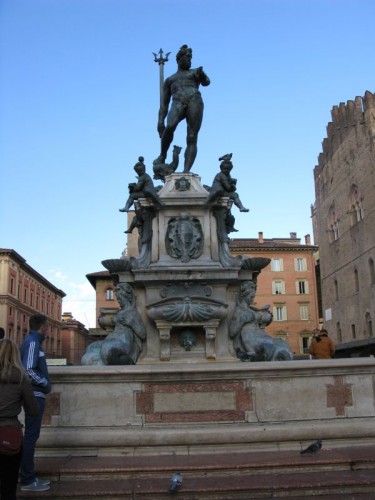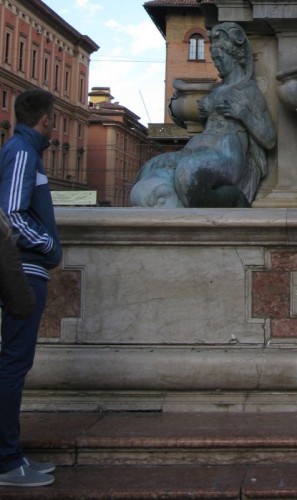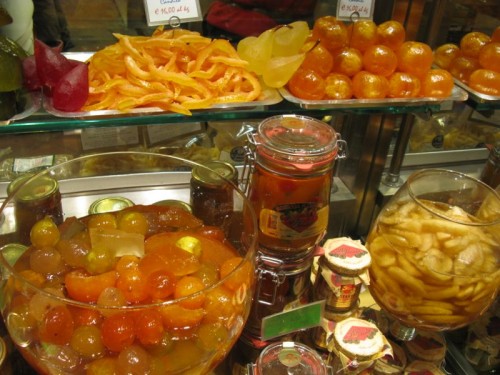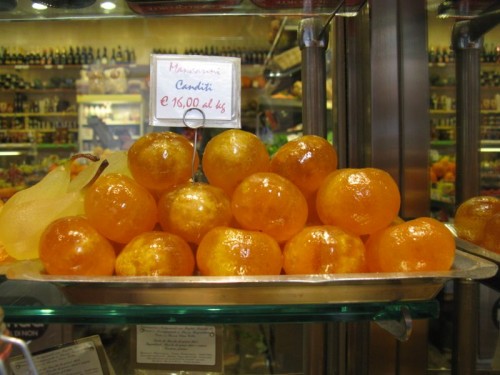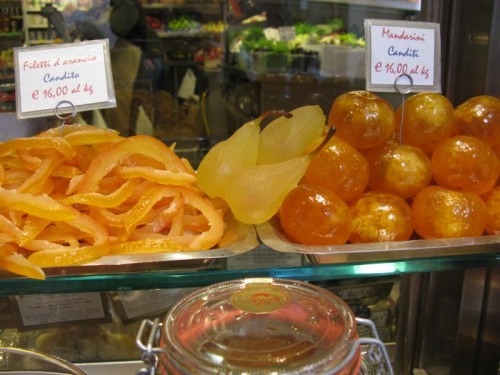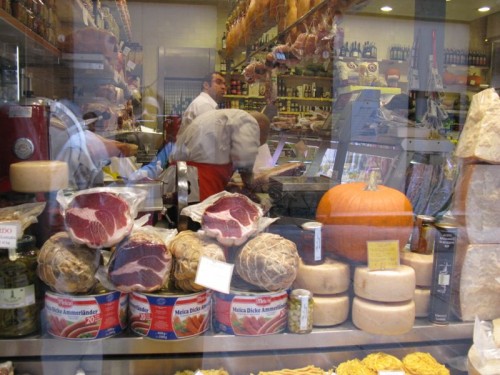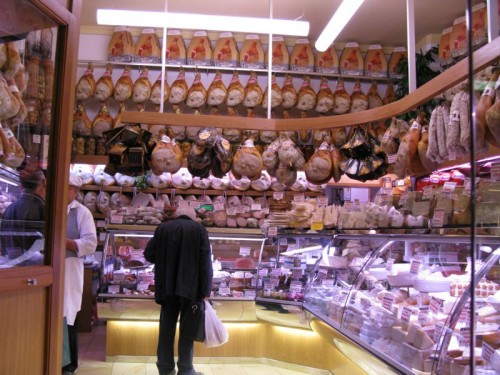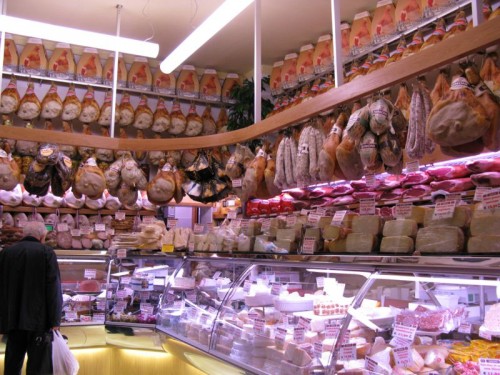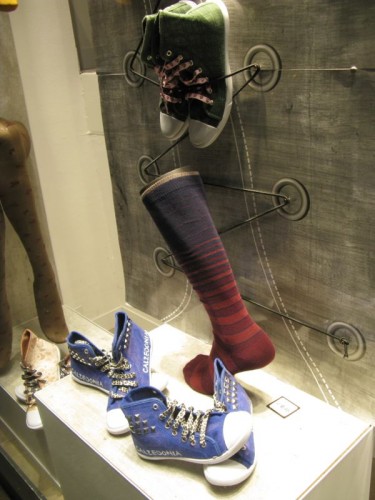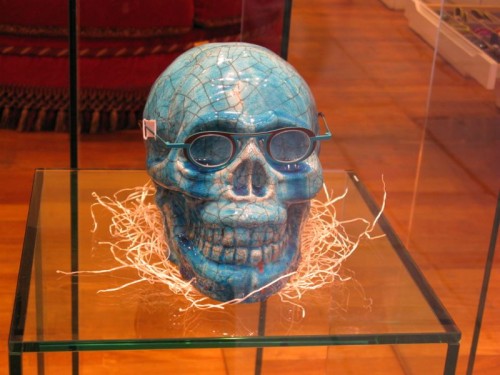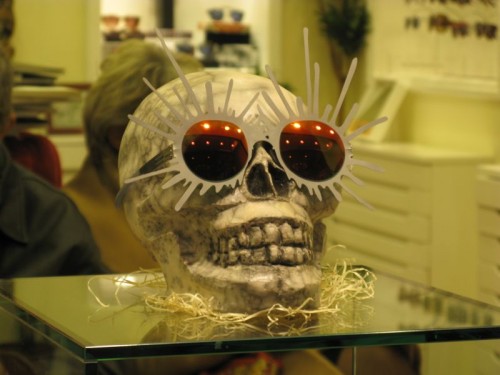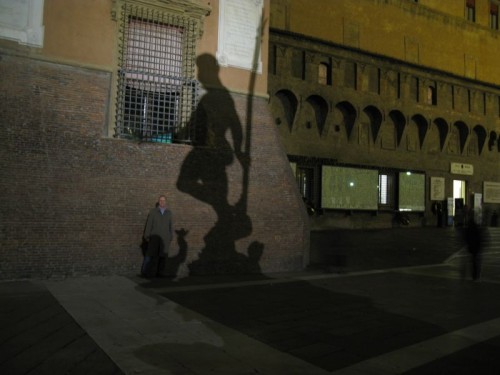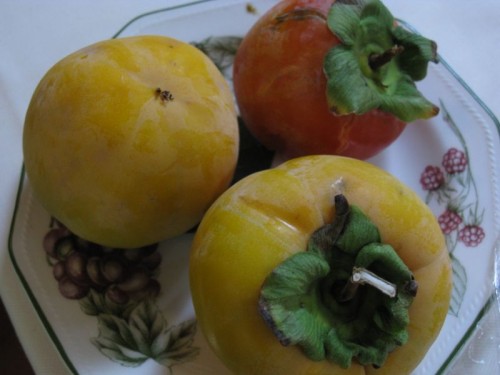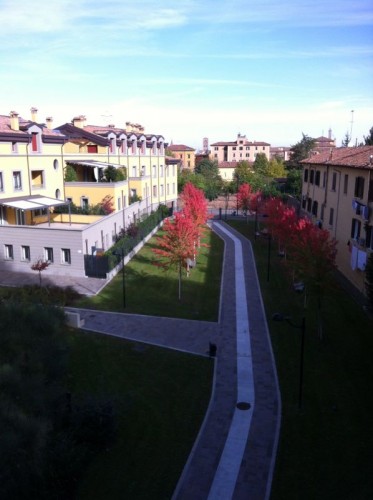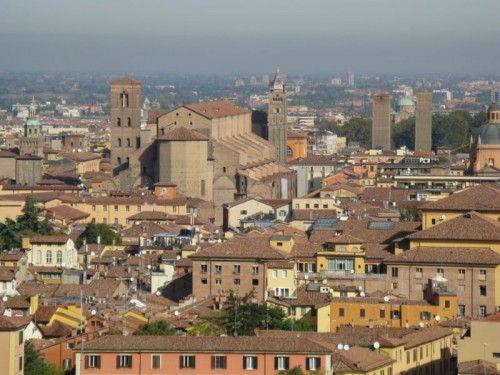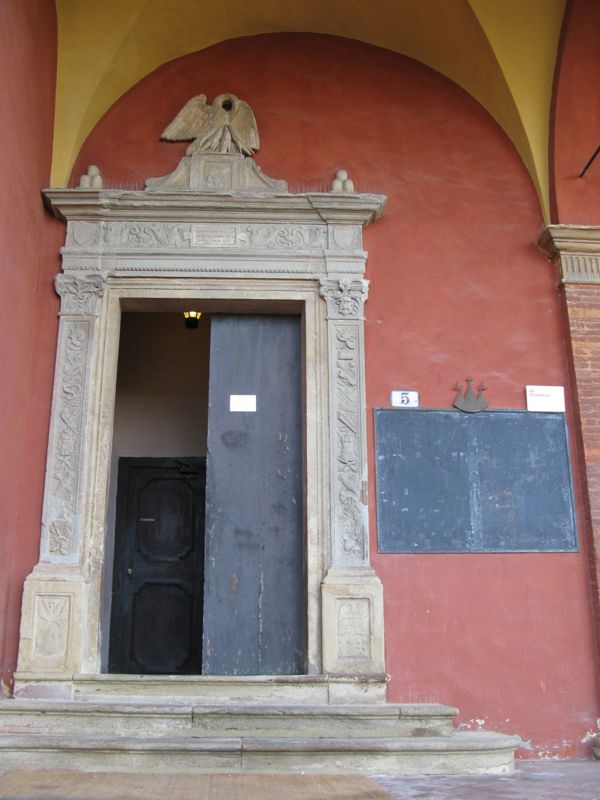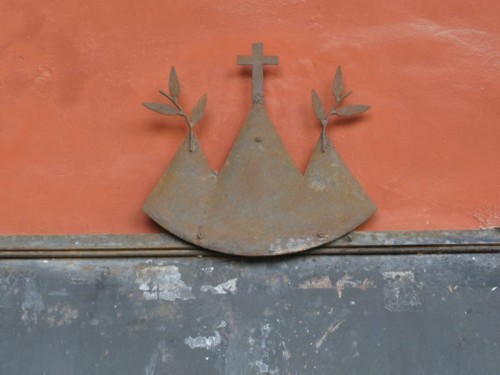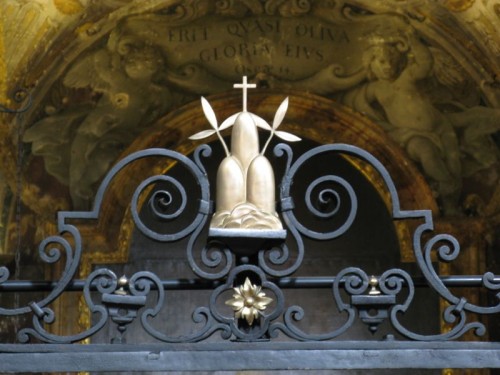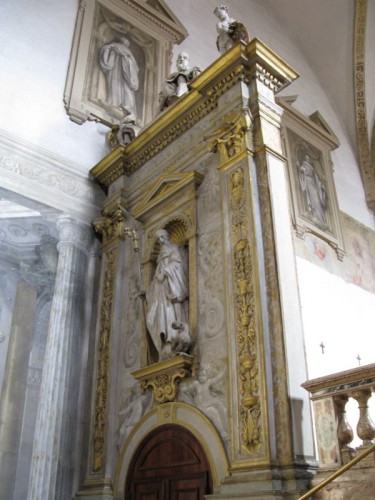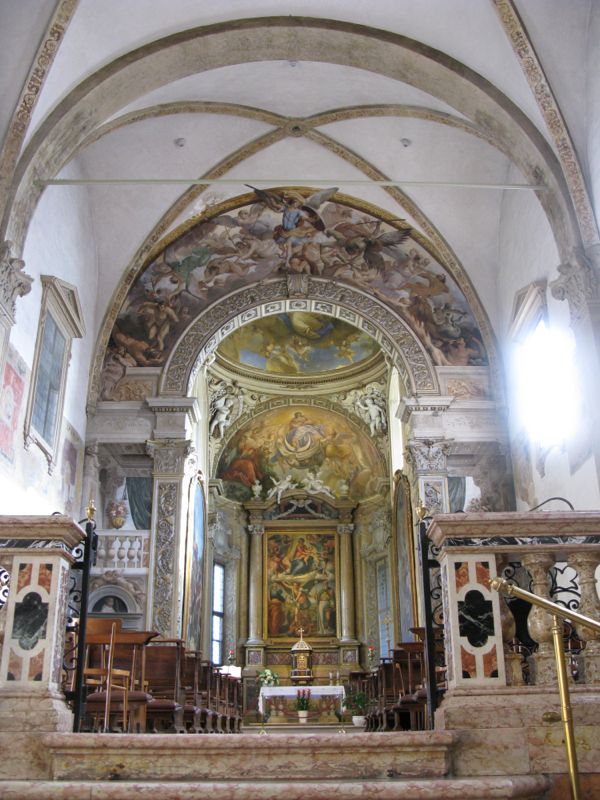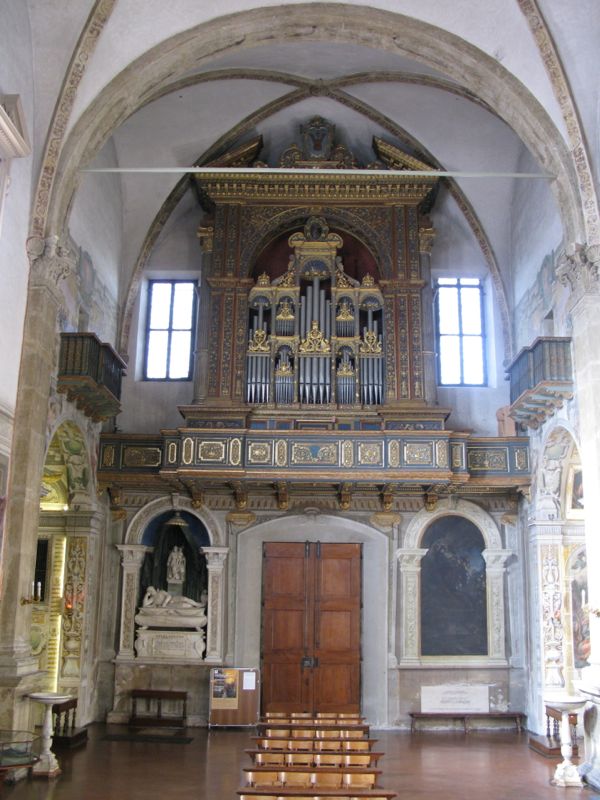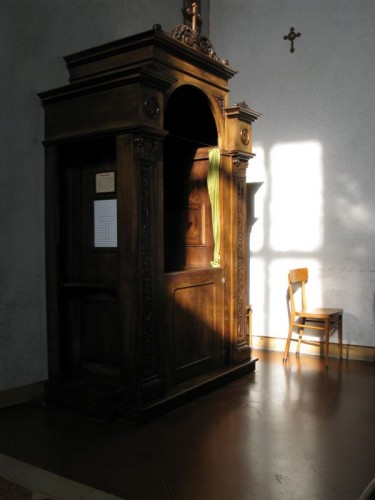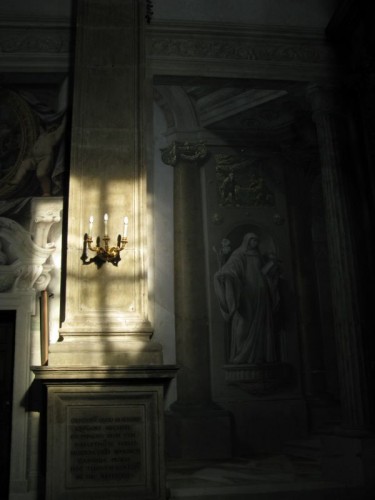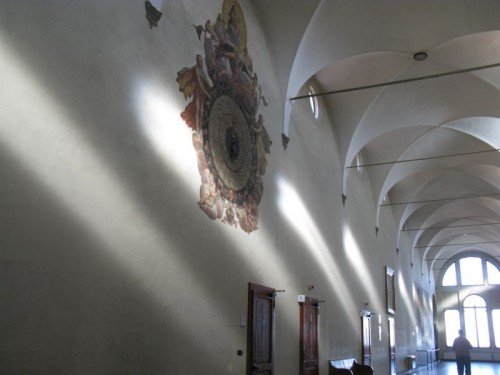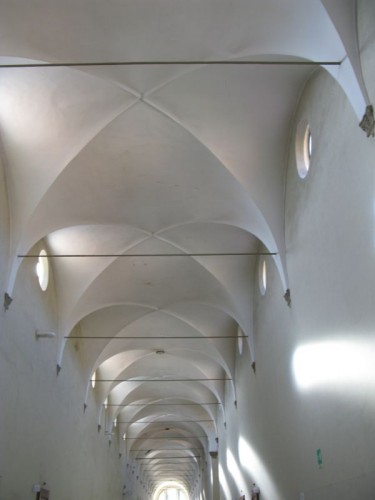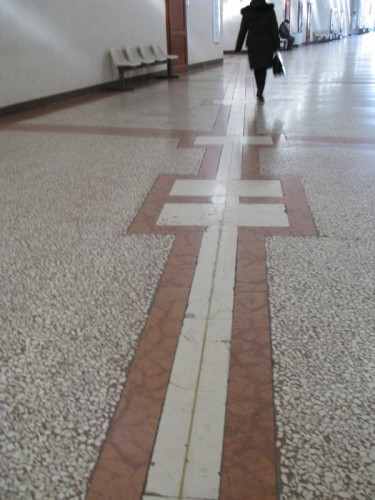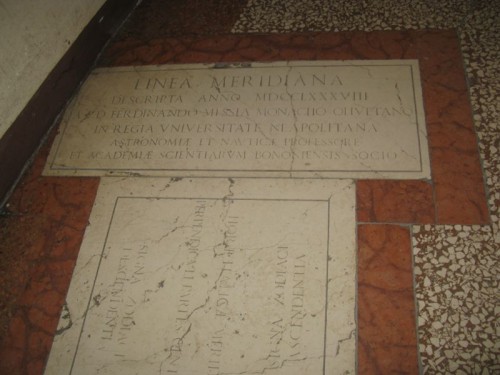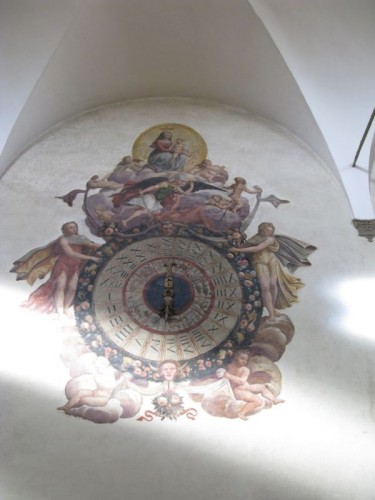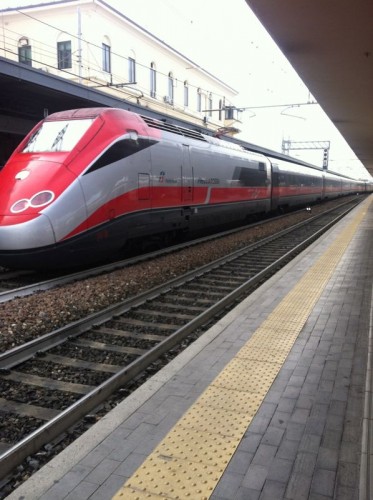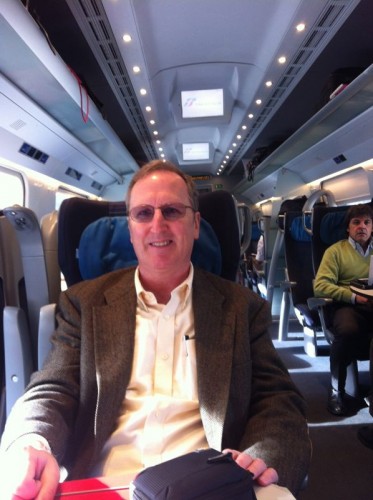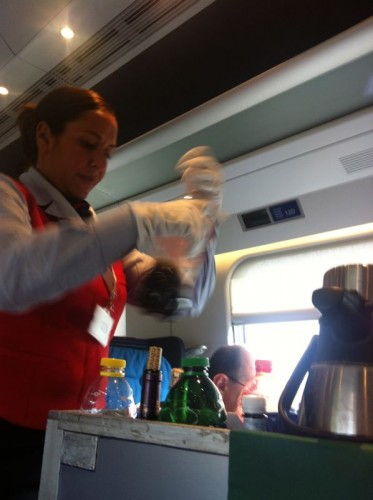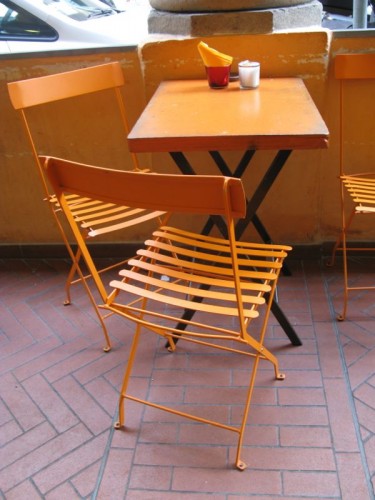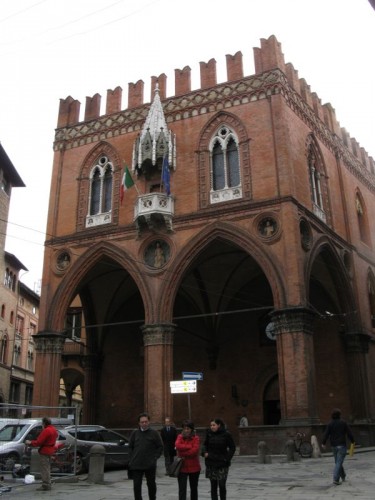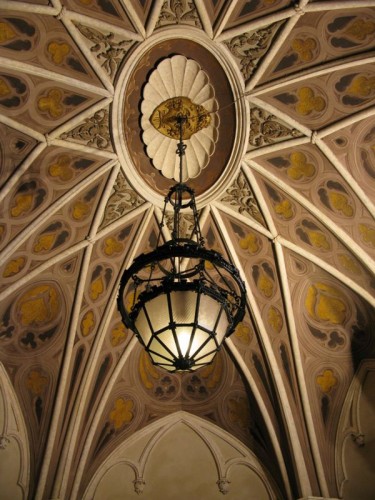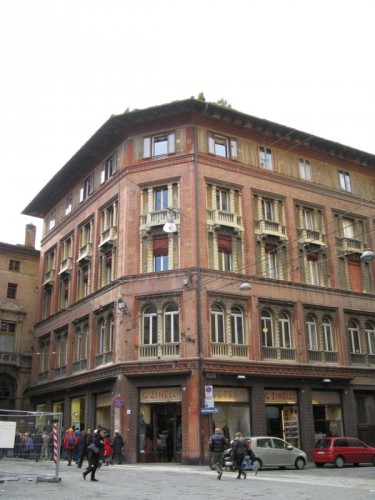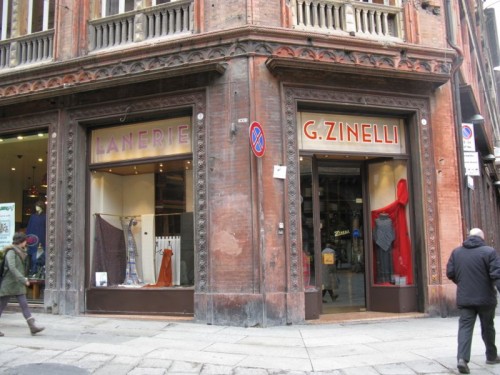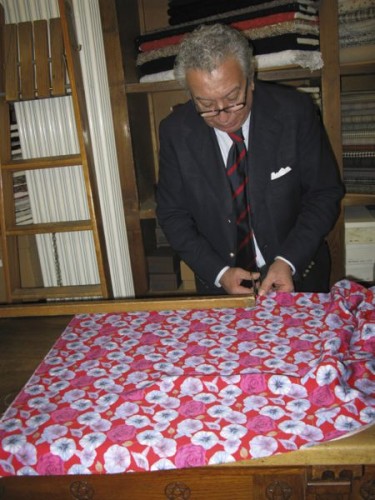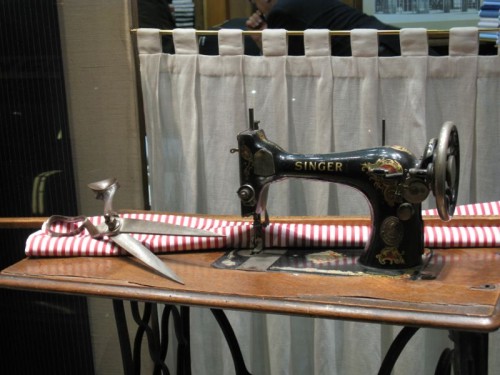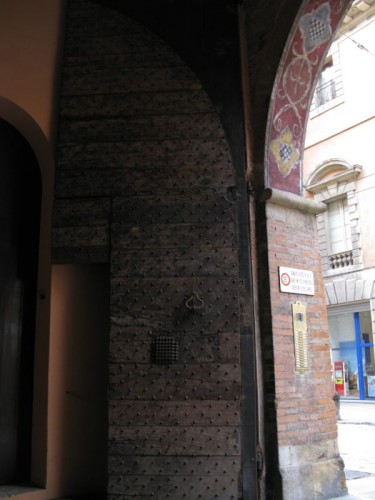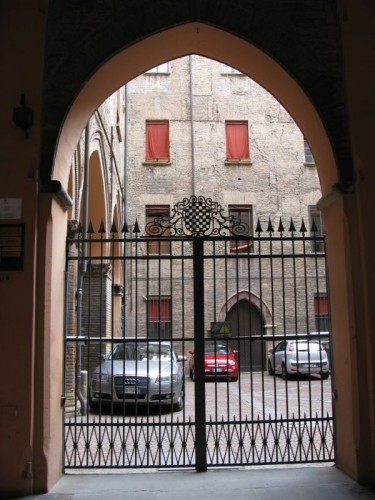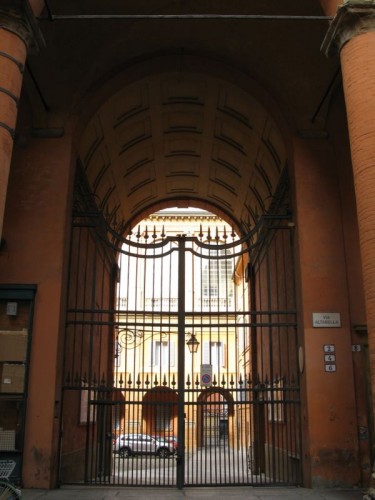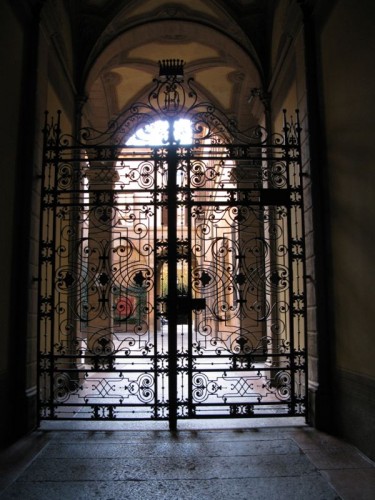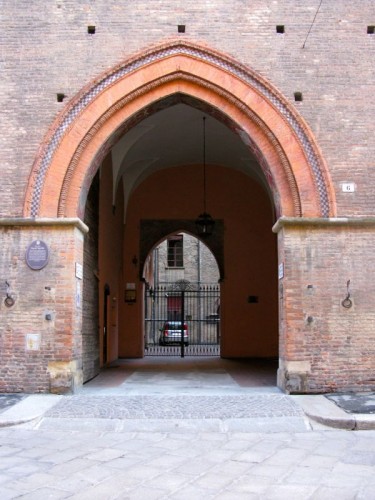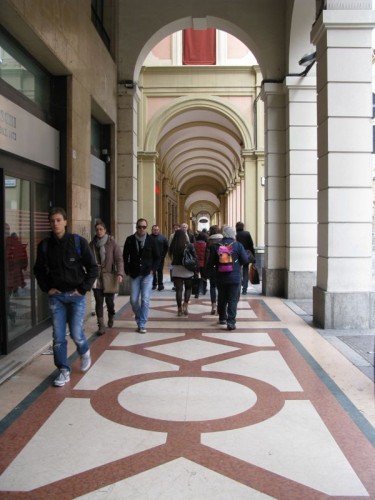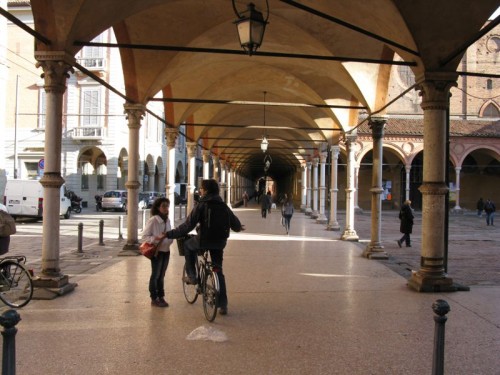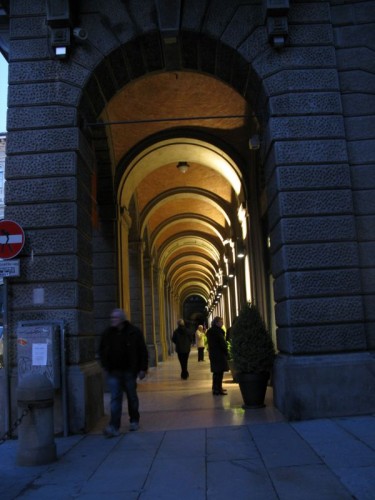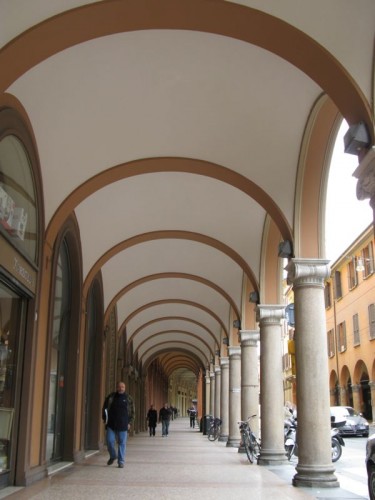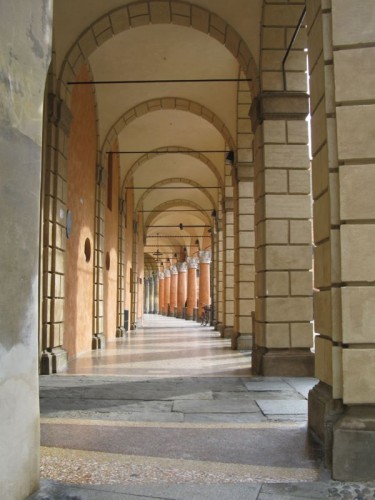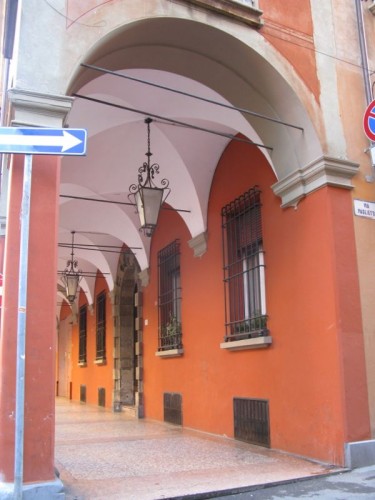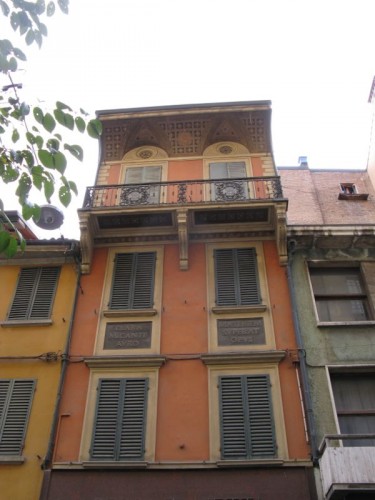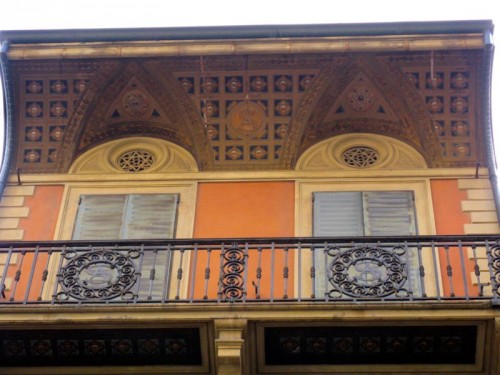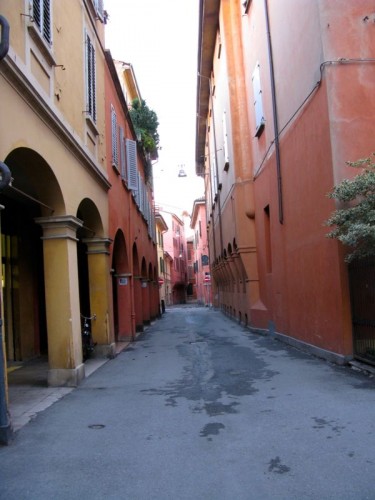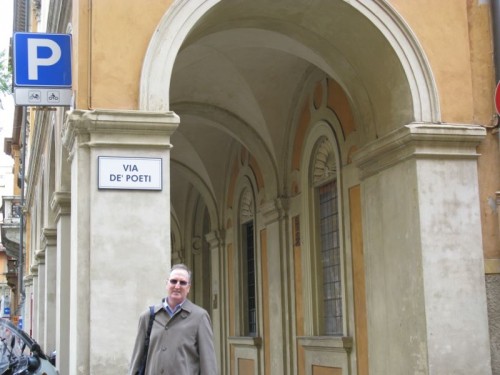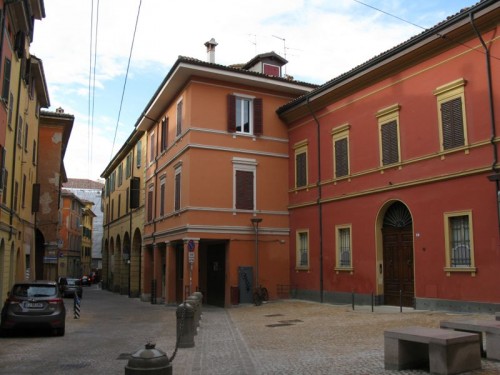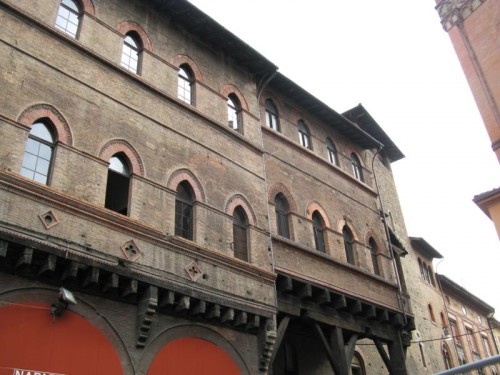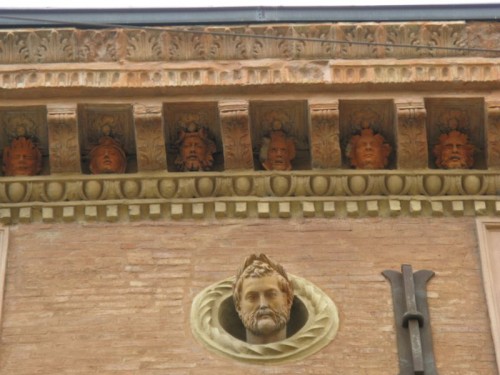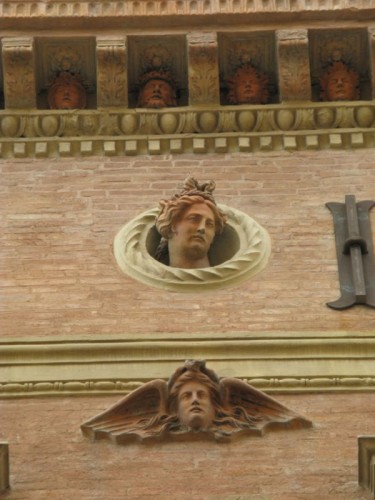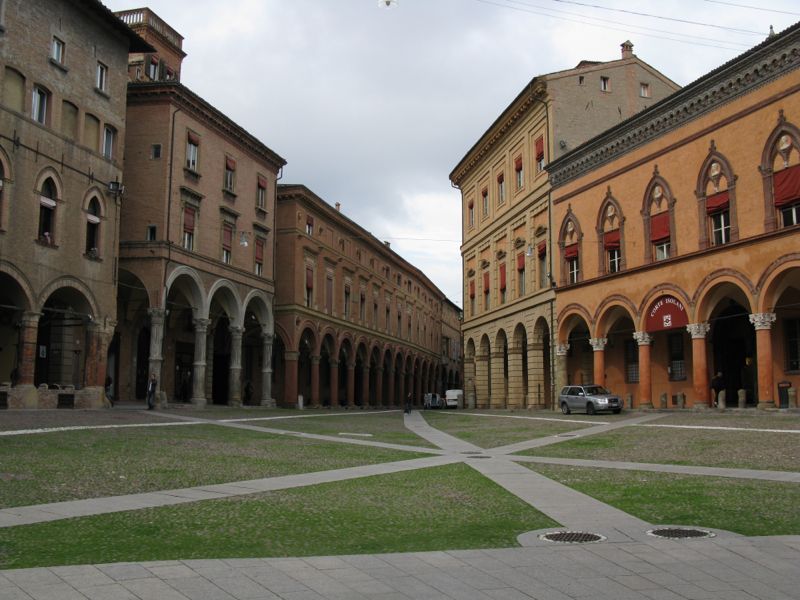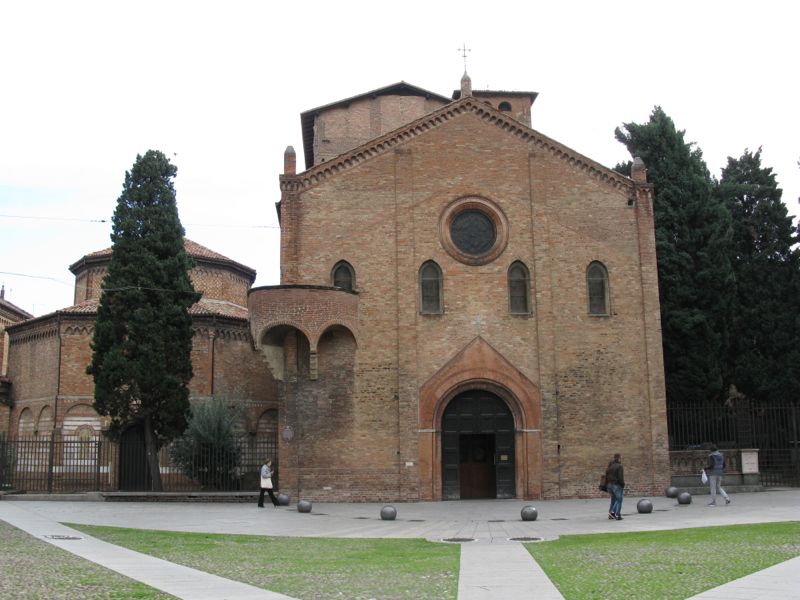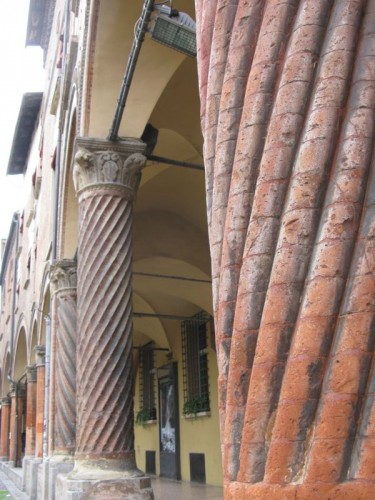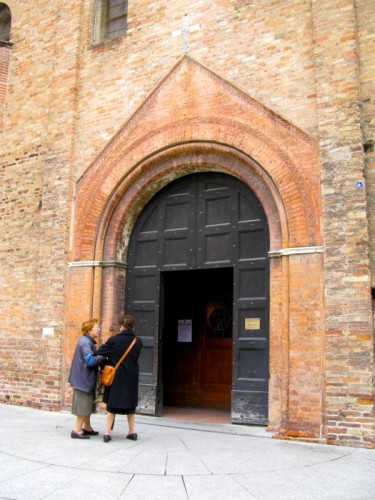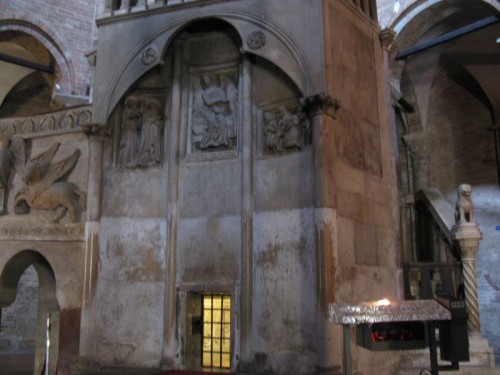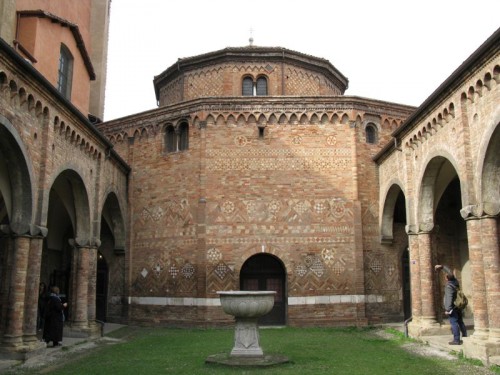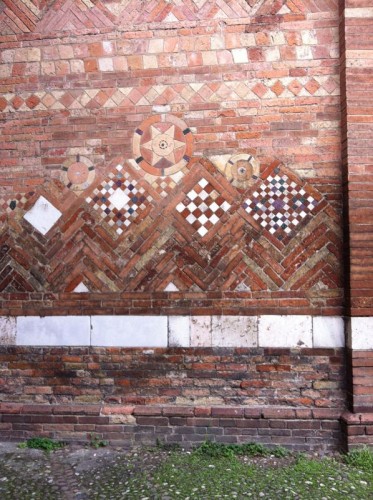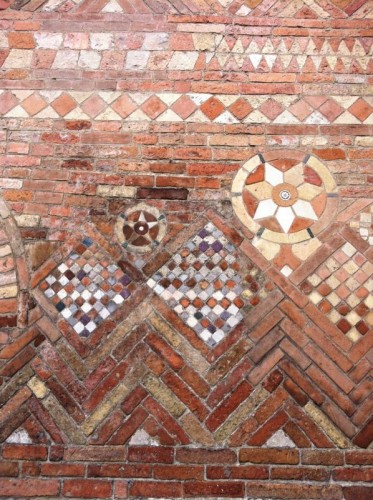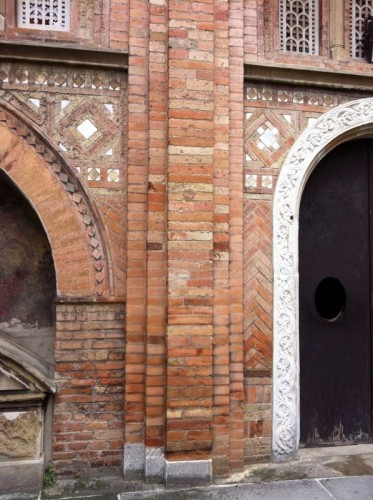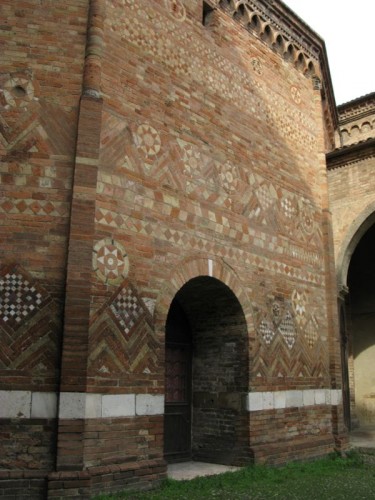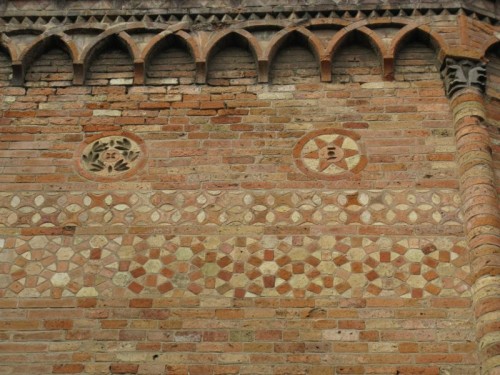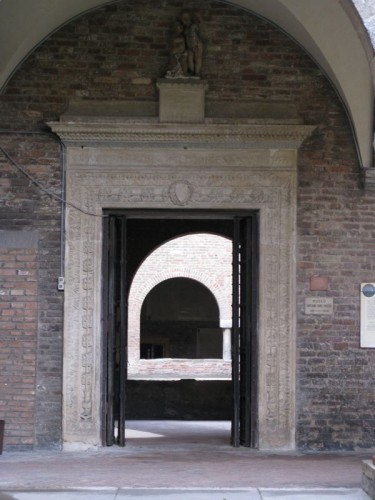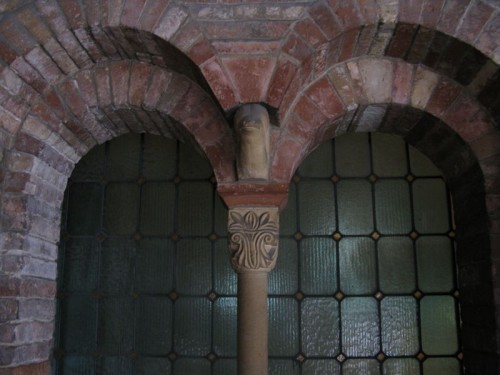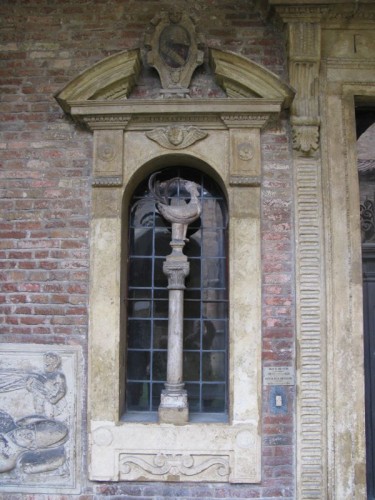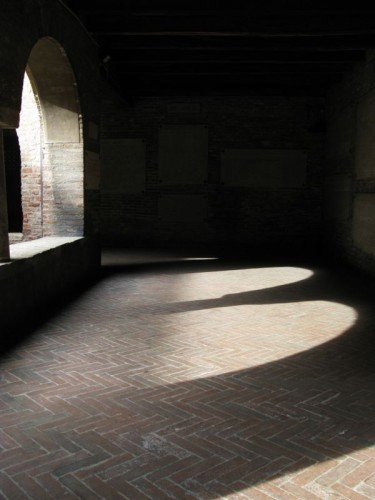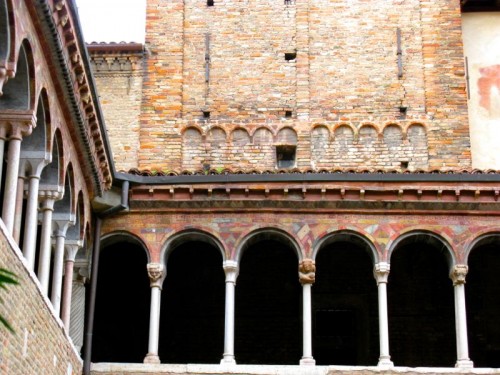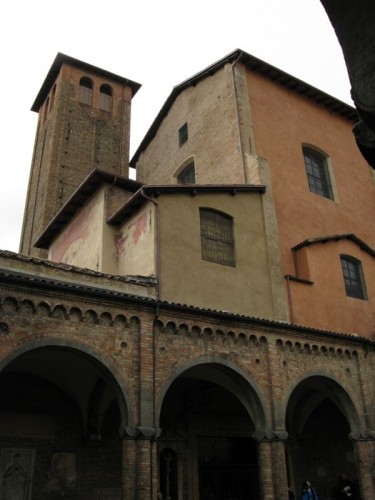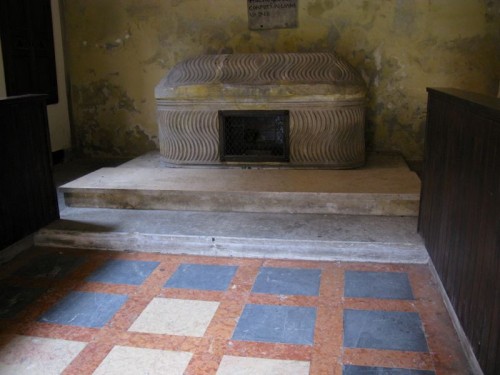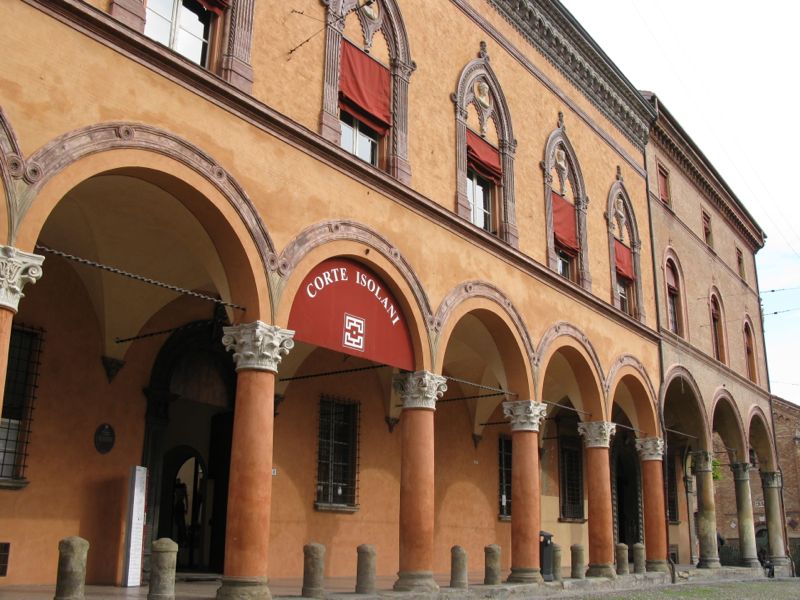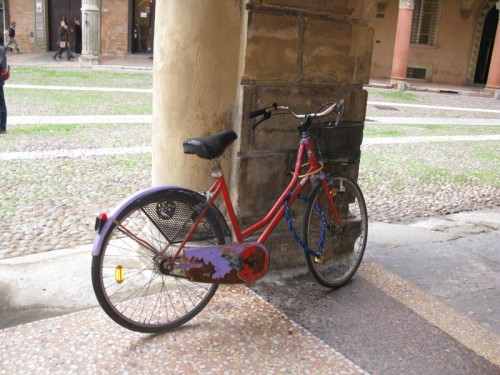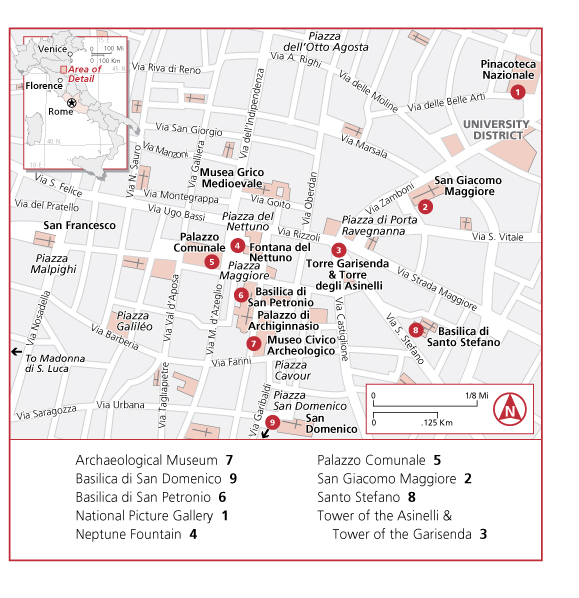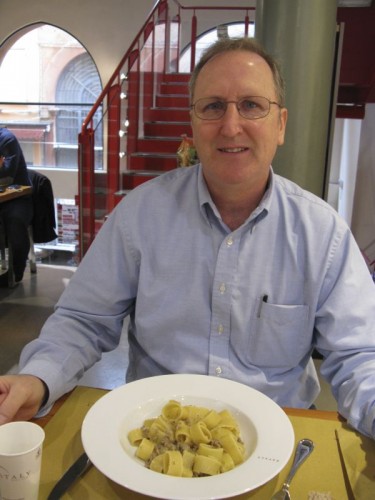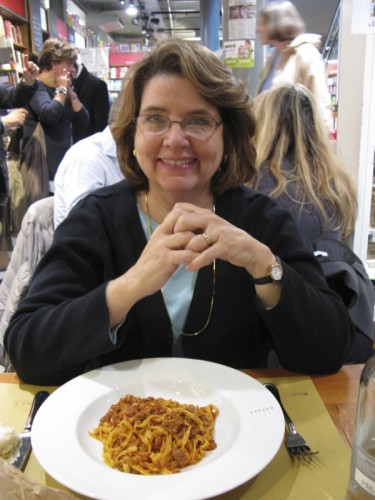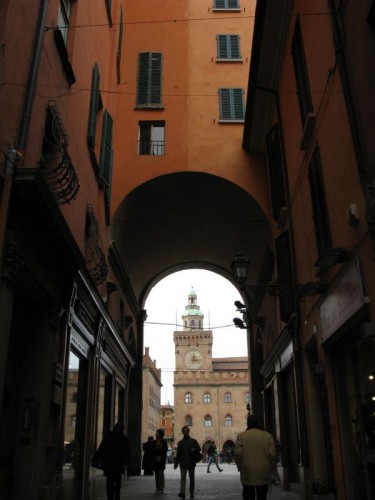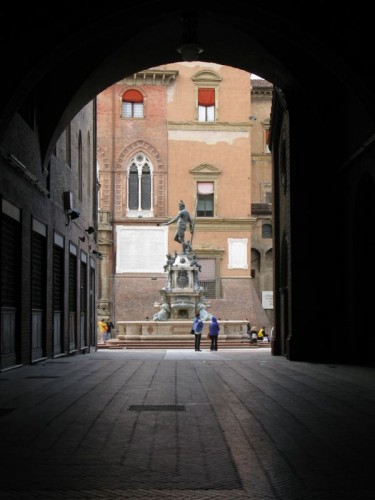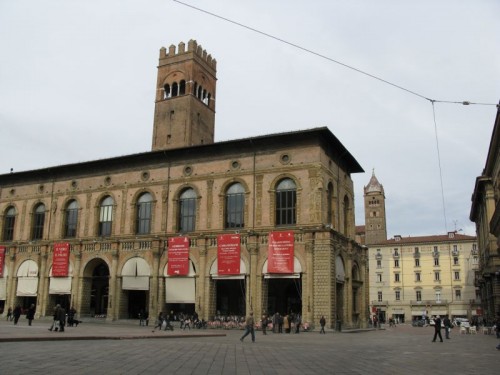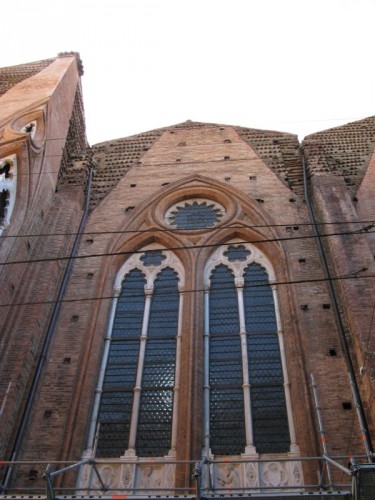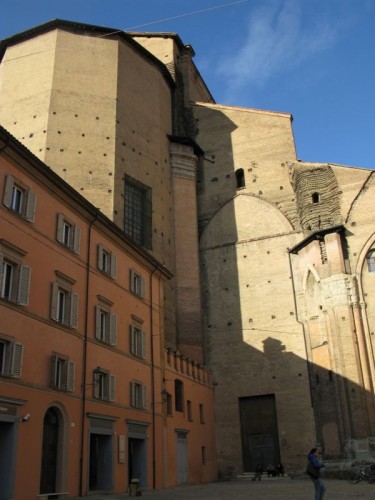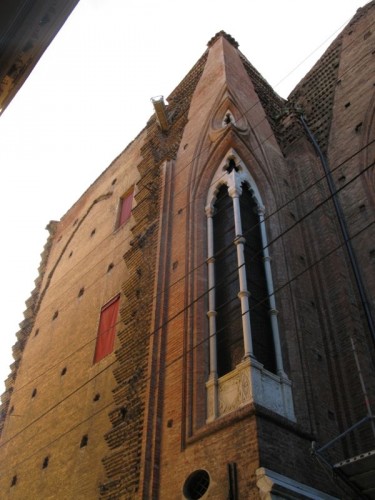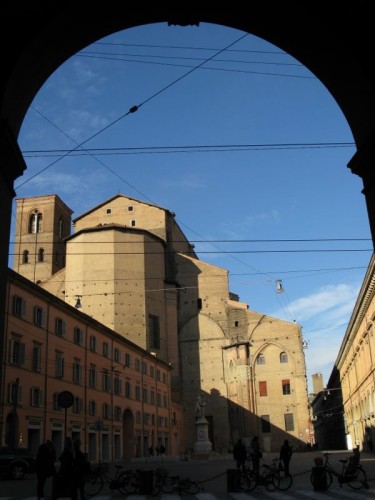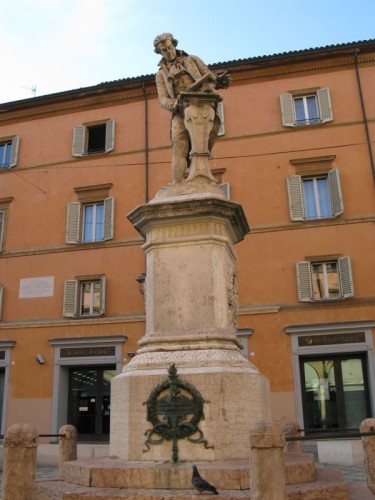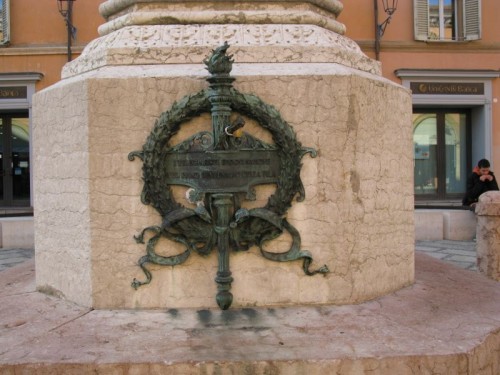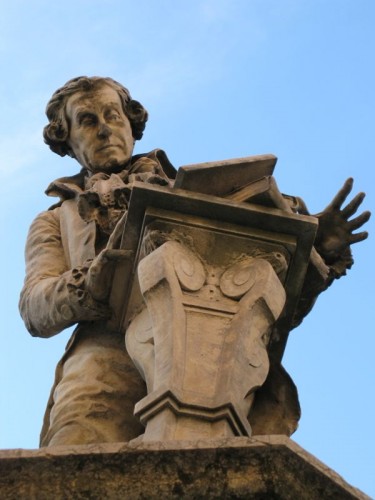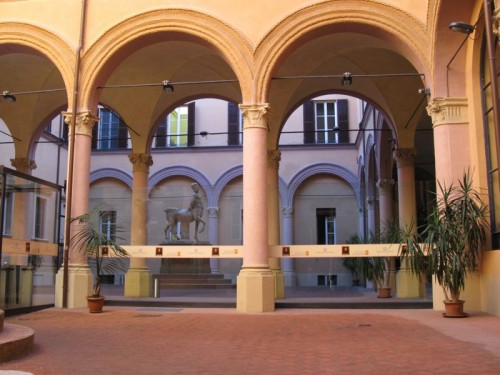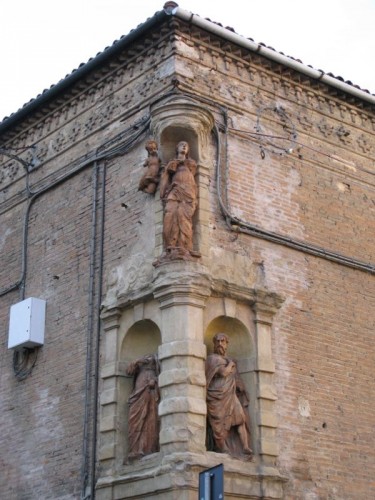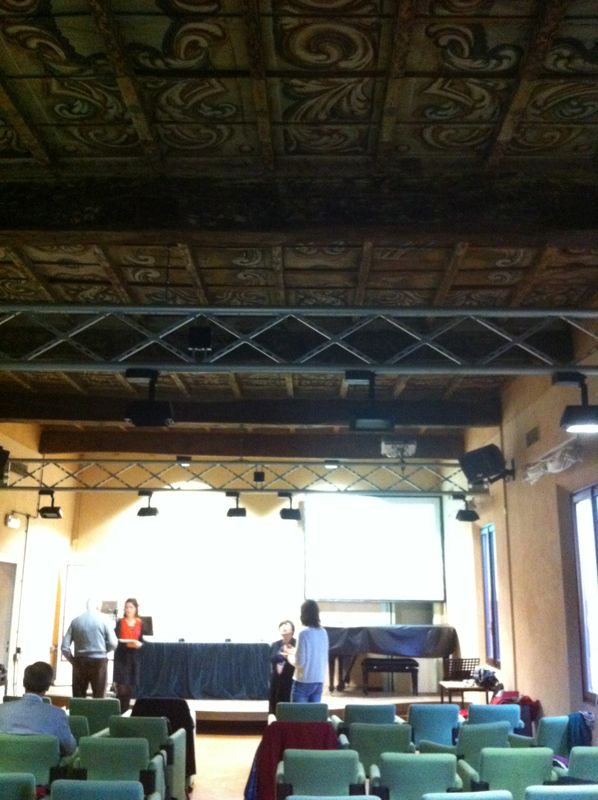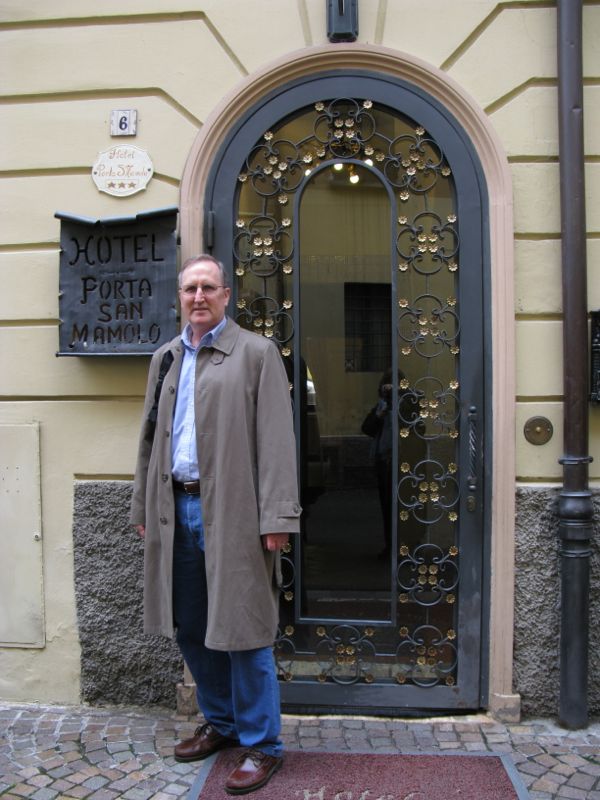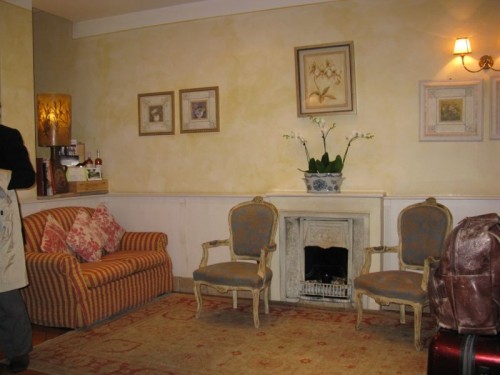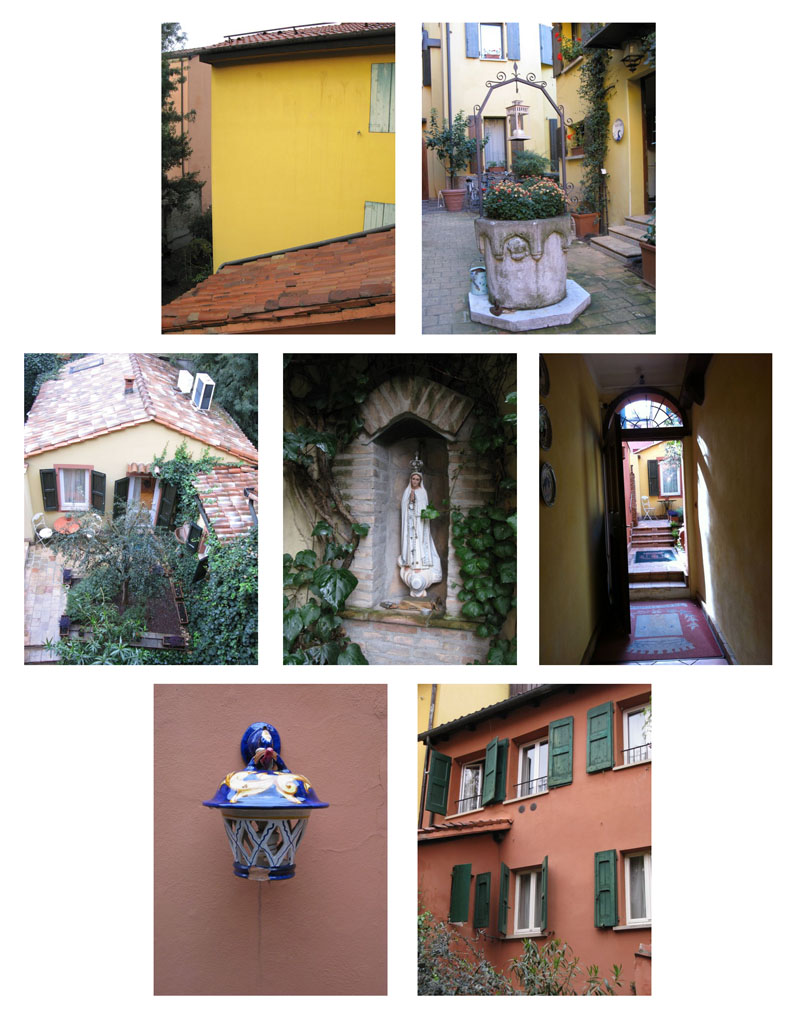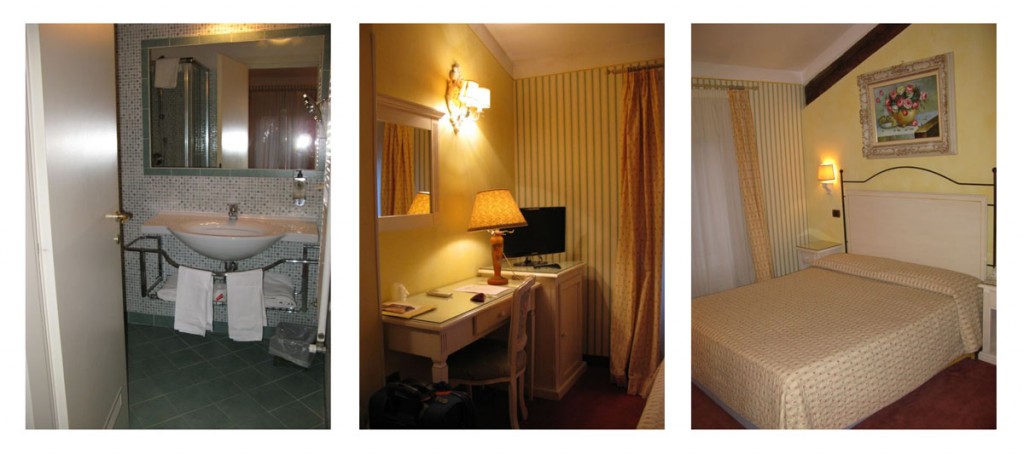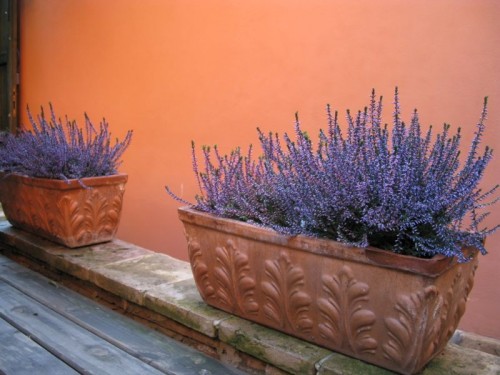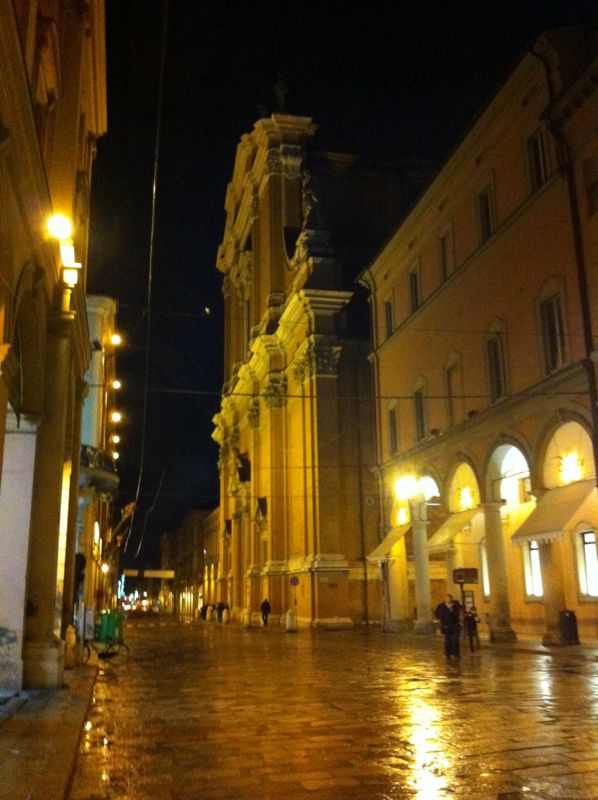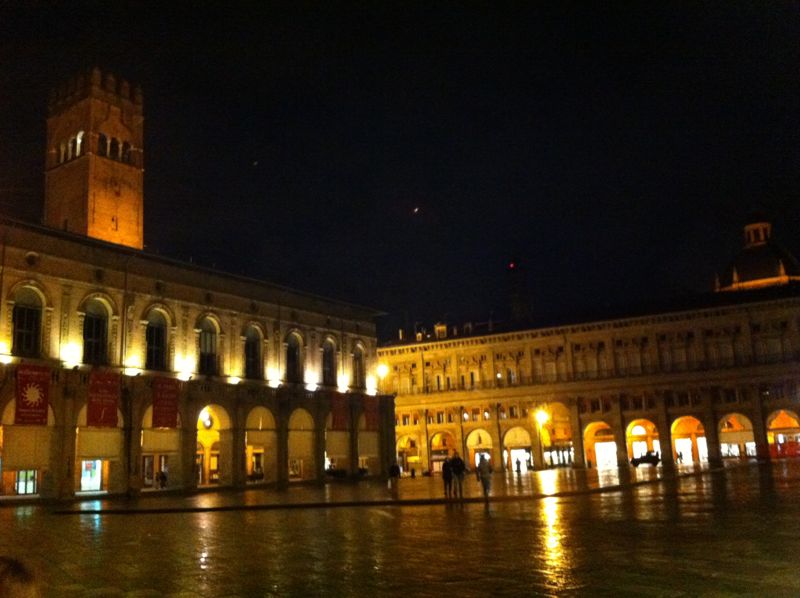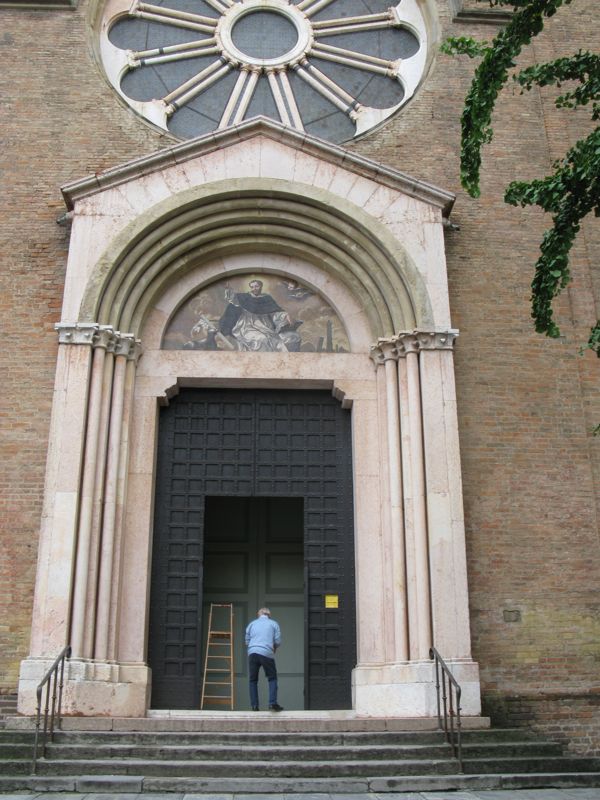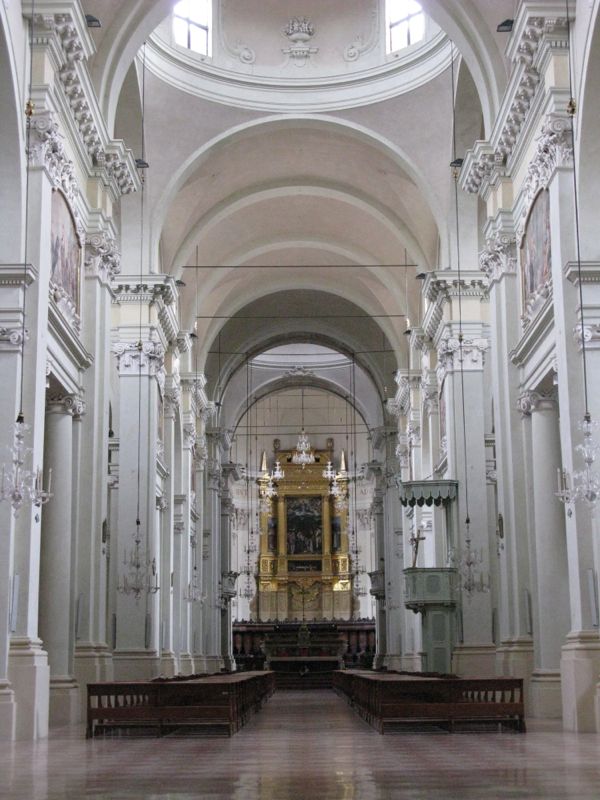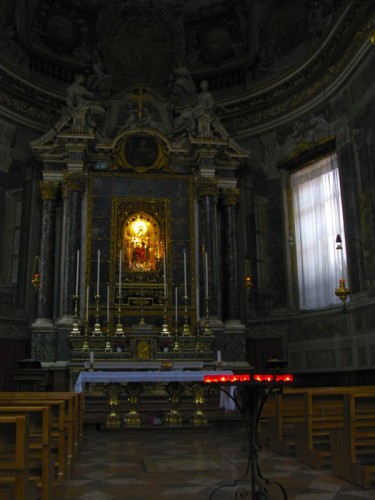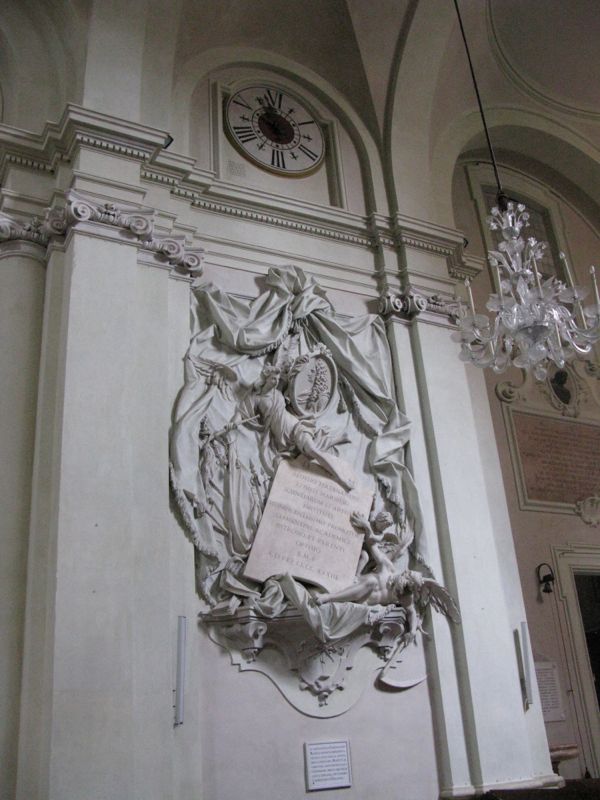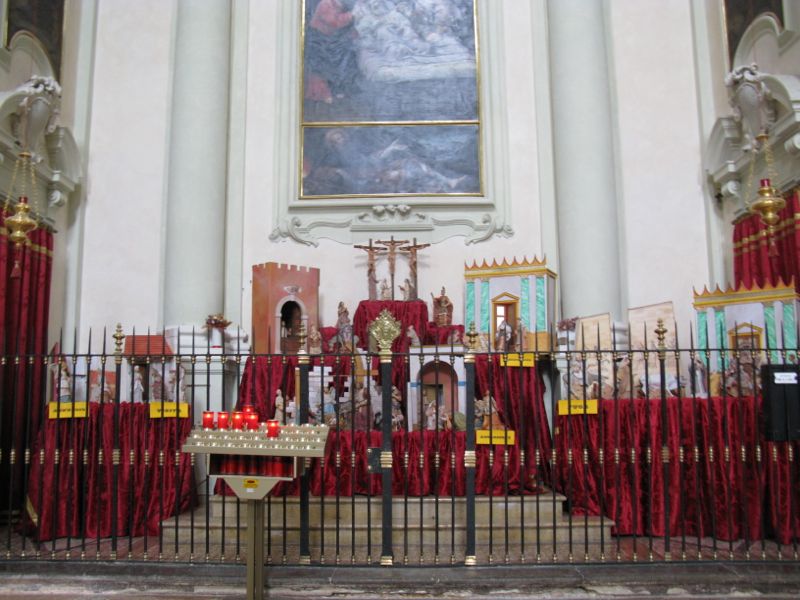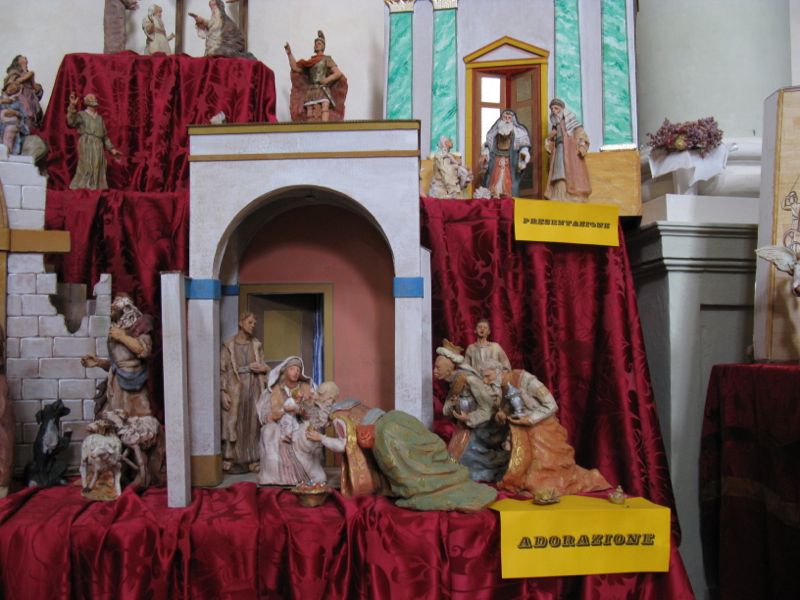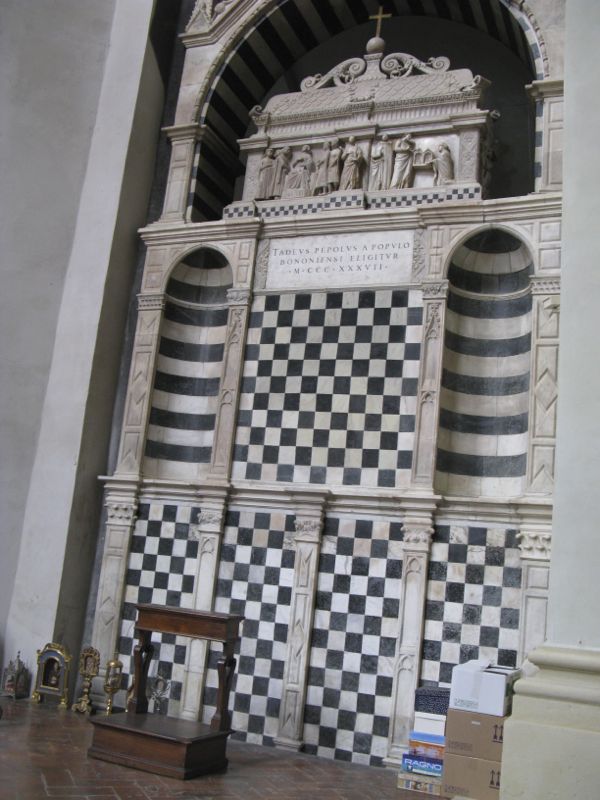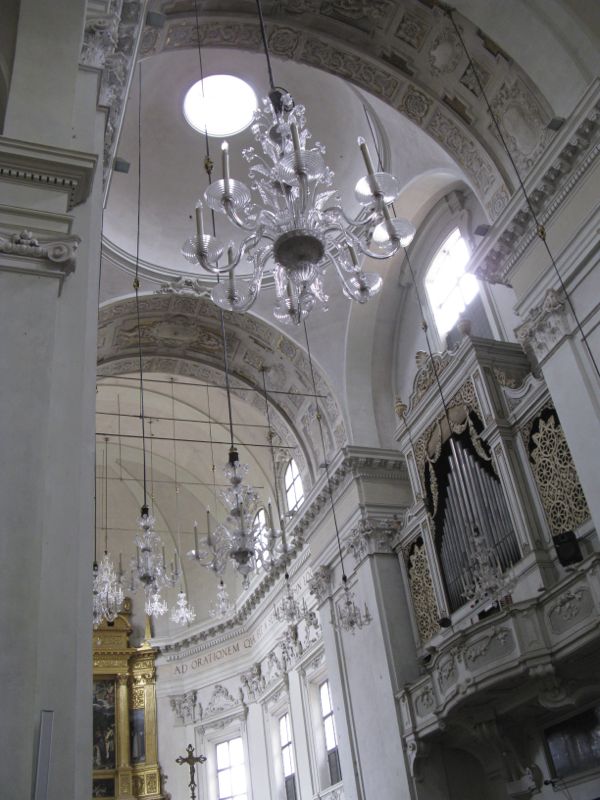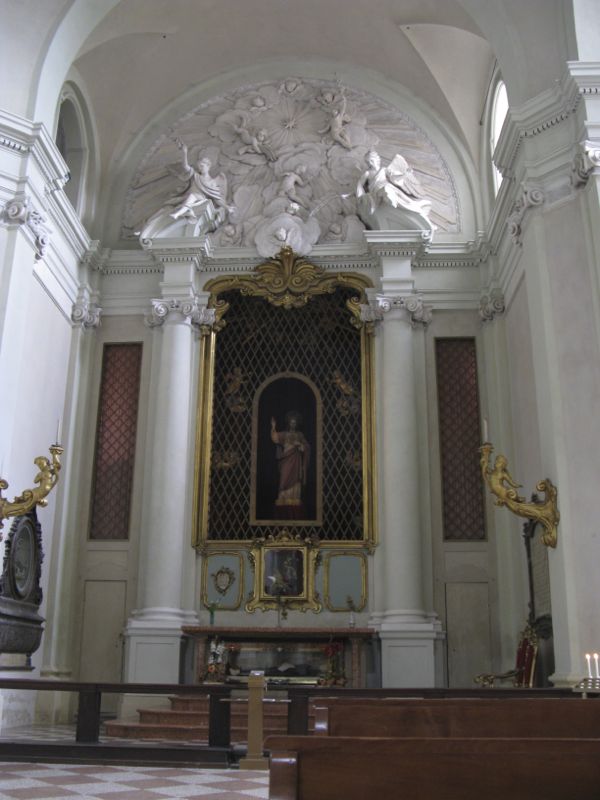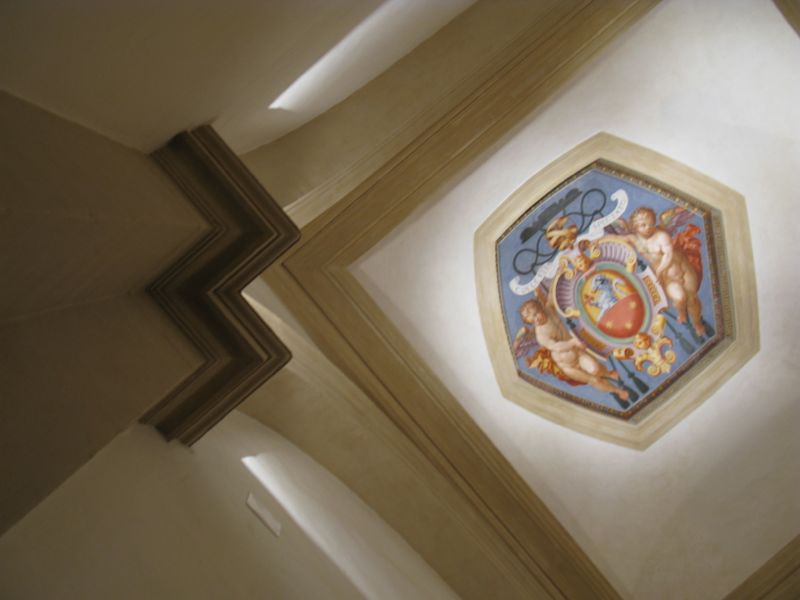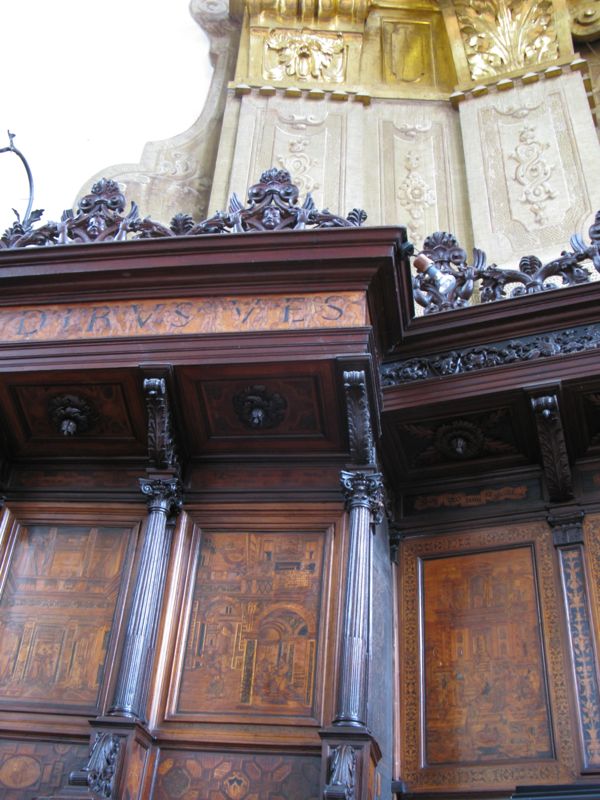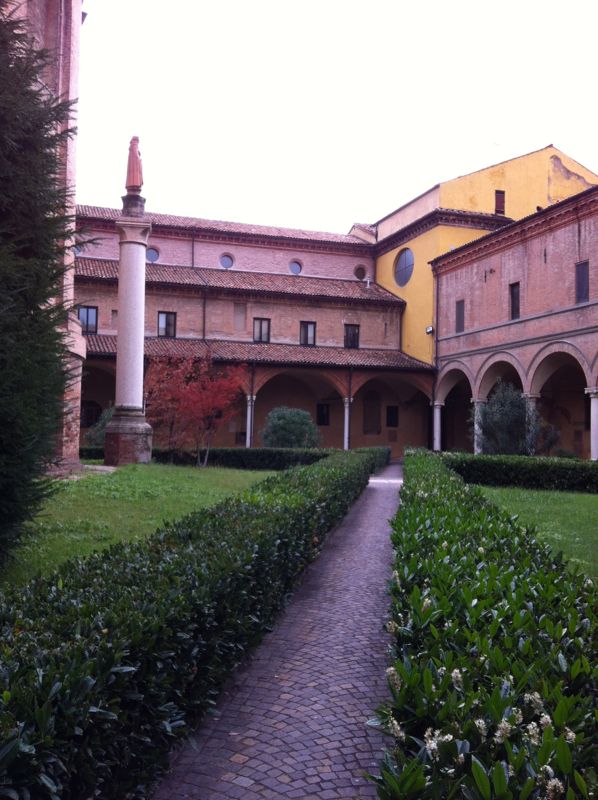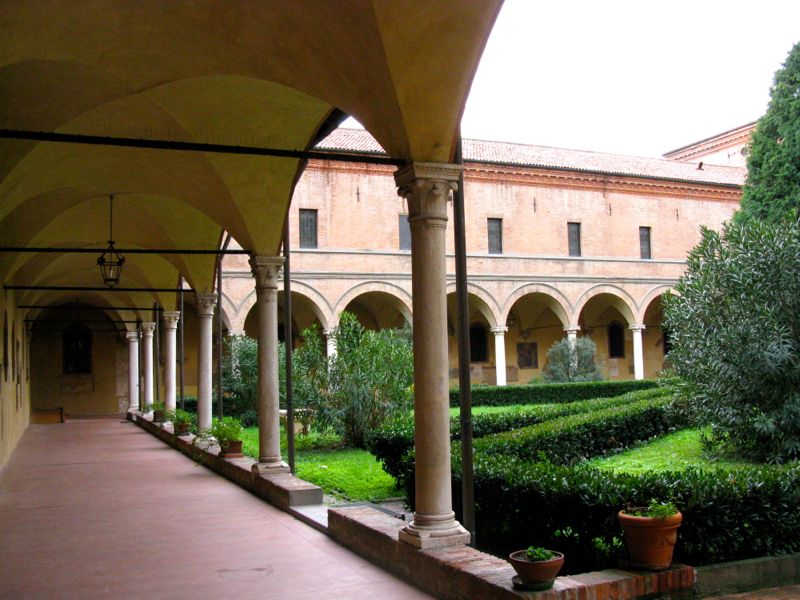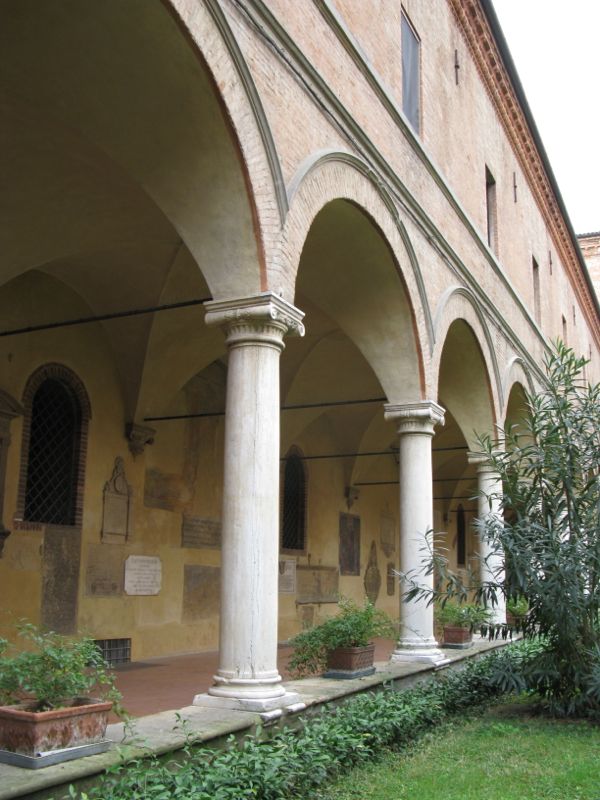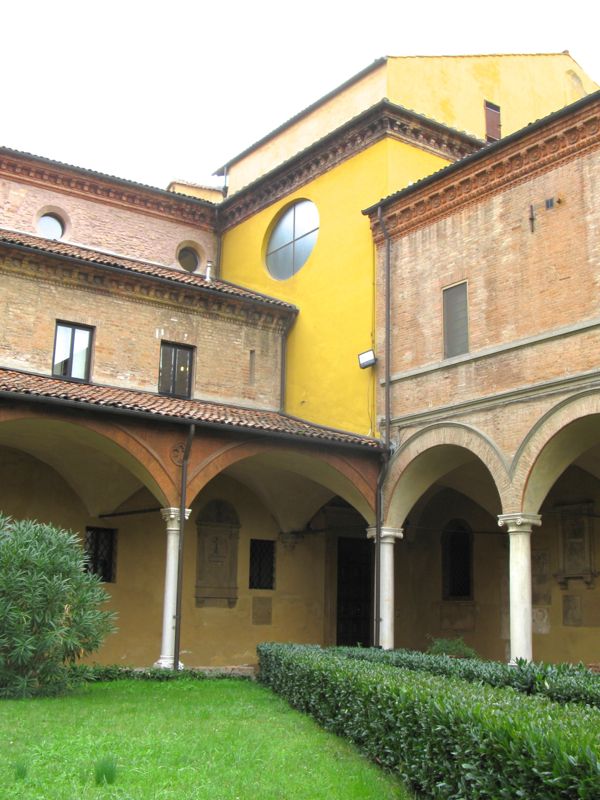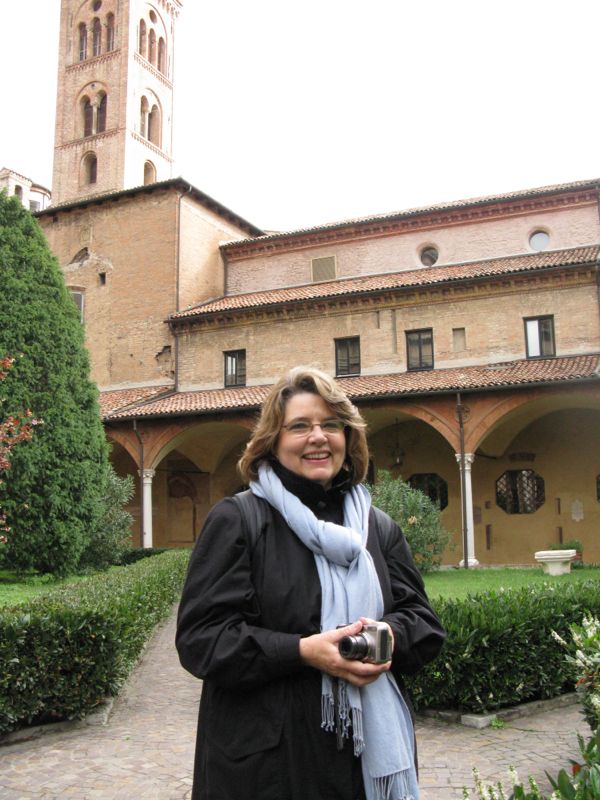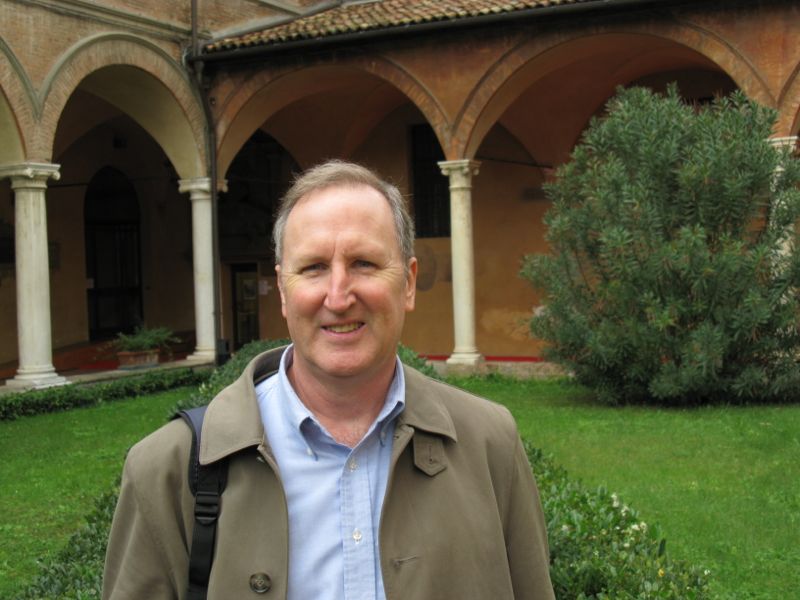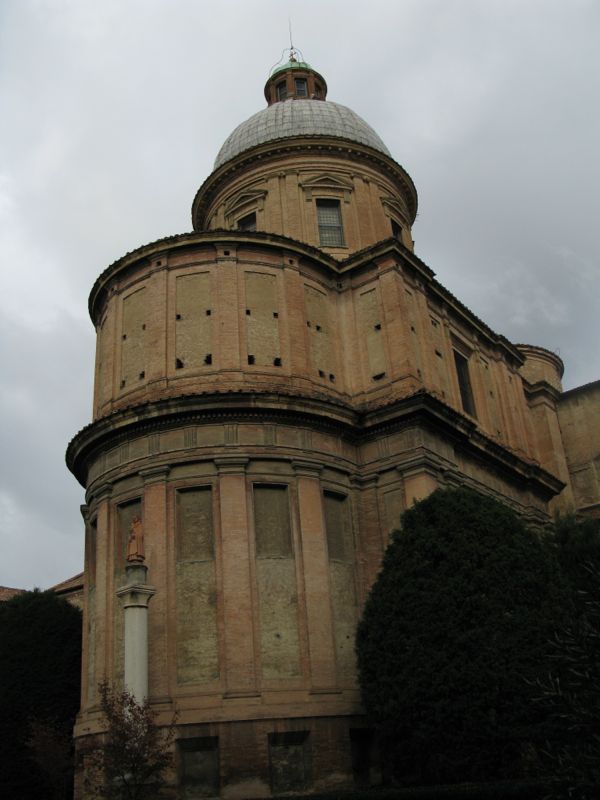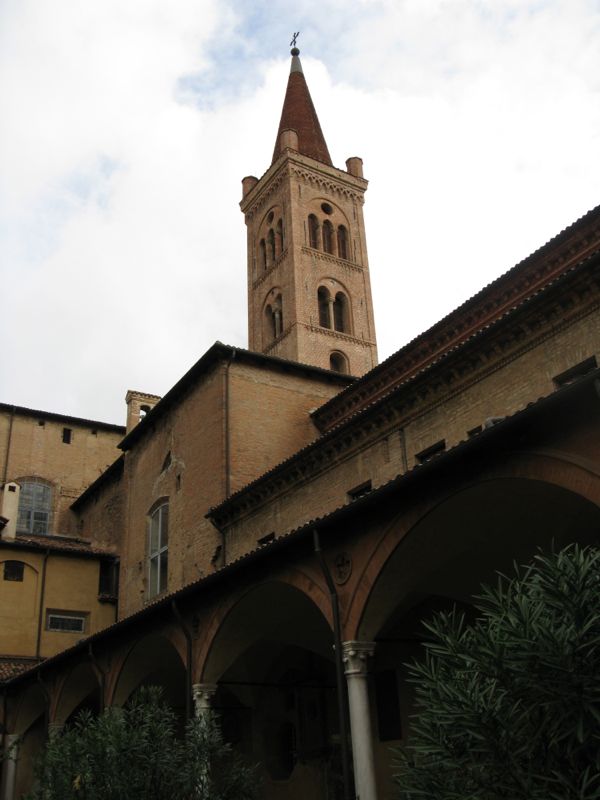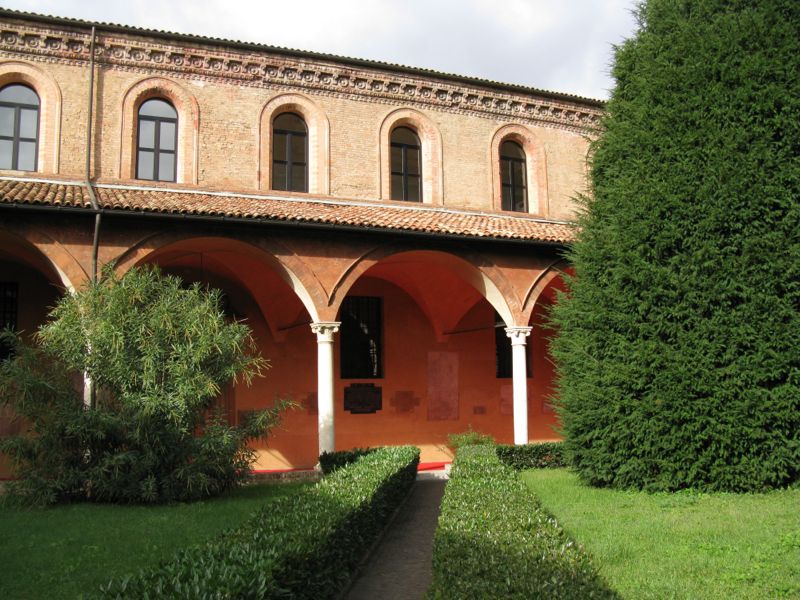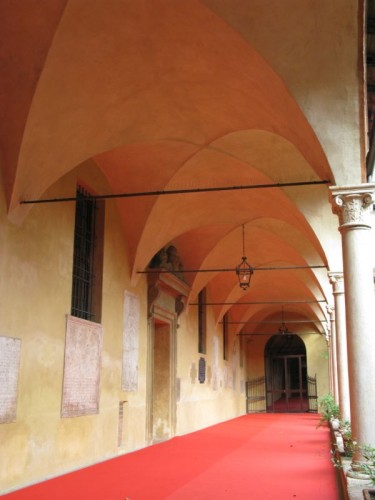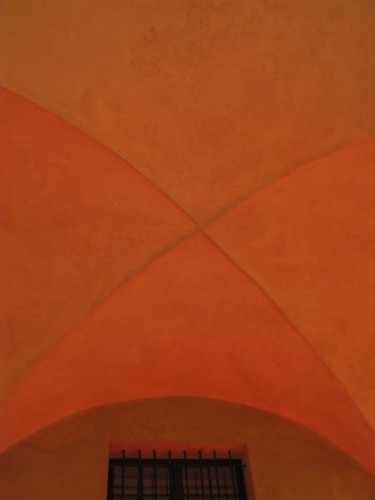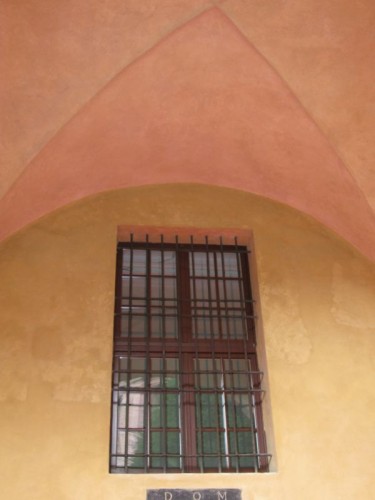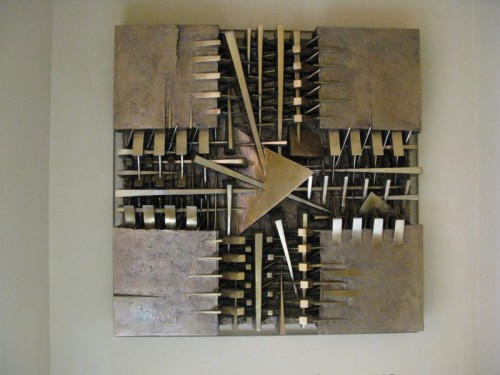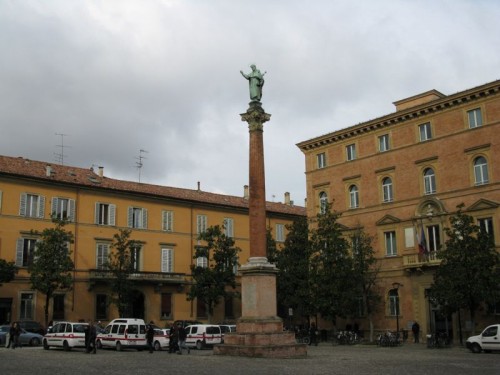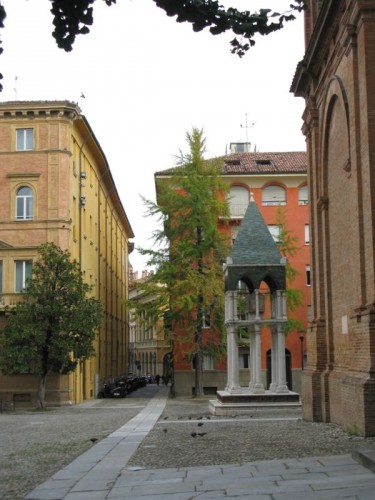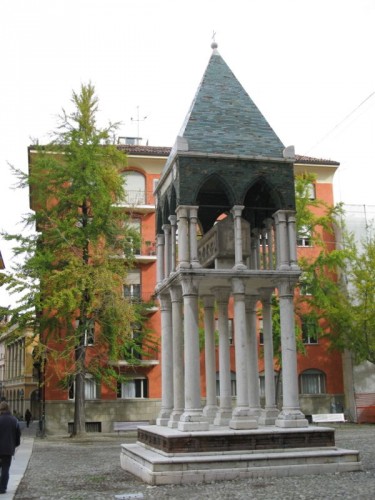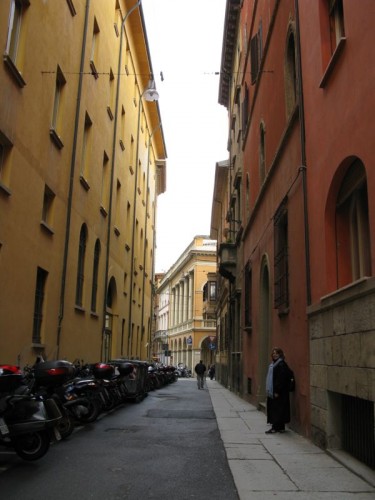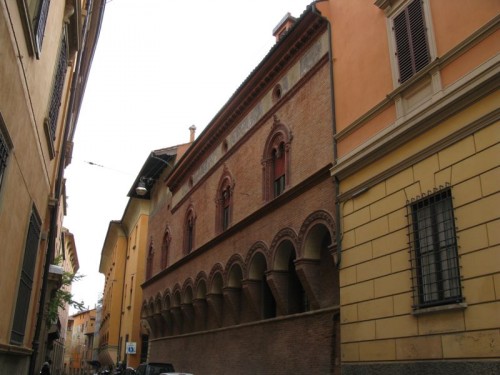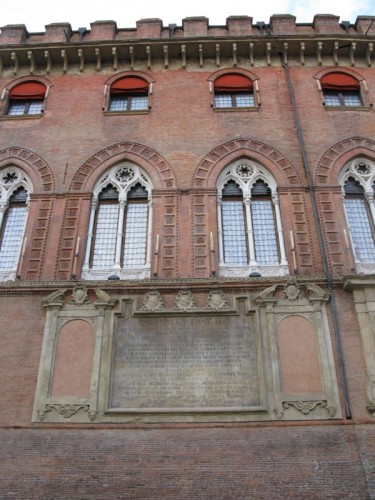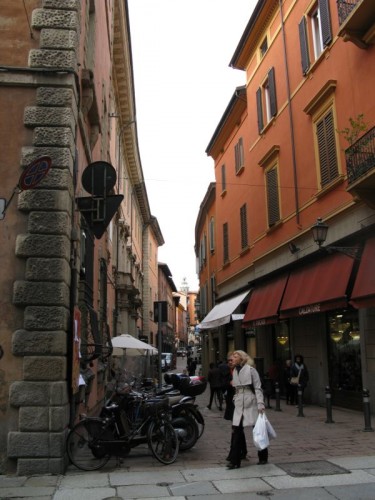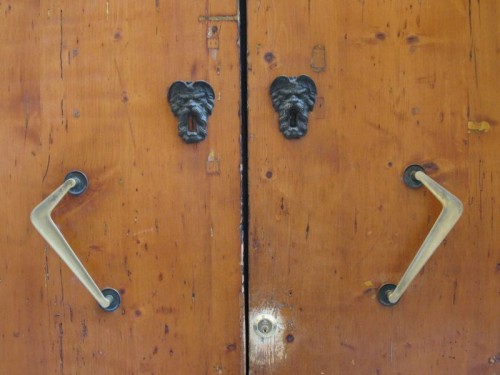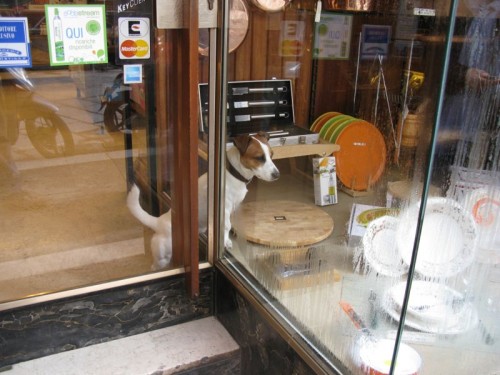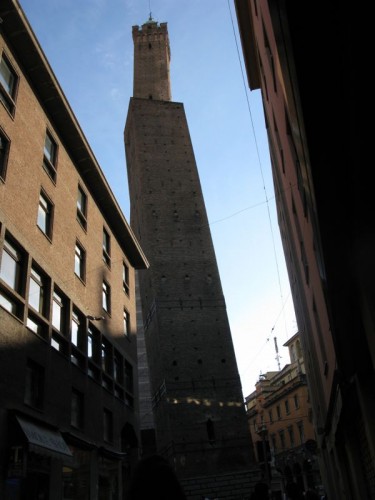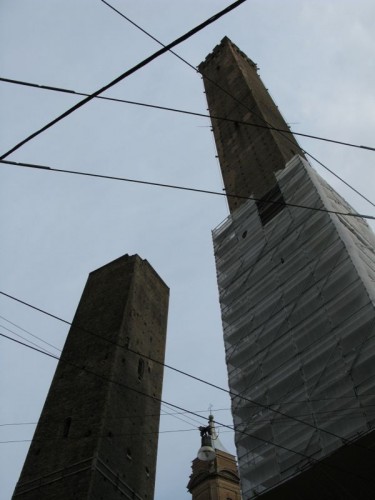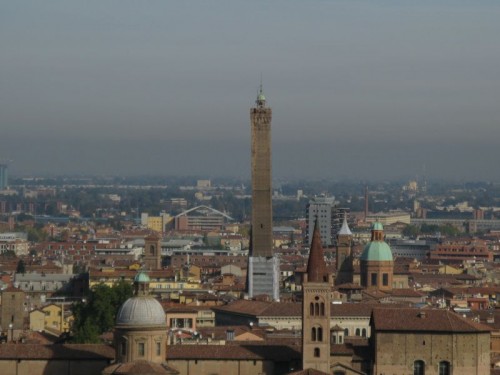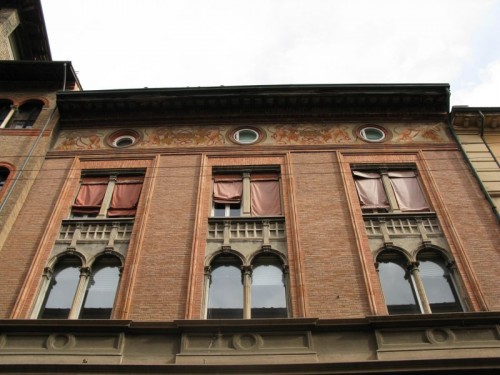Italy 2012, continued
We leave Bologna around noon, first grabbing a sandwich from one of the shops at the train station. Arriving in Padua, we find the tourist office, get our all-important tickets to Scrovegni Chapel (the whole reason we are in Padua) and wend our way to our hotel. We’d changed our hotel at the last minute because the new one promised high-speed internet in our rooms. First lie of the day. We checked in, logged in. Nothing. Then we heard Lies 2-10 on why we couldn’t get internet (famous line: “Ours is working just fine.”). I never knew I was such a lily-livered wimpie internet-addicted tourist until I tried to get online at this hotel. We finally gave up settling in (checking emails from our children is one of our usual tasks), and headed out. Did I mention that it was raining here in Padua, too?
We take the tram and get off at St. Anthony’s Basilica, where we see the above, up from the bus stop. This is one of the big sights in the Catholic world, the place where St. Anthony’s tomb resides and pilgrims come from all over the world to touch, leave mementos of their healings, and pray. No photos are allowed inside, but the gift shop is quite extensive, if you wish to buy a postcard, or twenty.
Here’s a shot of the cloisters, where they do allow photographs, but since the daylight is waning, and the cloud cover was thick, it’s hard to get good photos of this buildings.
They actually had FOUR cloisters; that ought to give you an idea of how big this place is. Here’s the well inside one of them.
Leaving the basilica, I nearly stepped on her face–a chalk painting in the square in front.
We walked up a side street, catching one last glimpse in the twilight.
Dave in front of a salumeria. We’d done some reading about this area of Italy and found out it was known for its food, especially its cured meats. We have nothing like their cured meats in the US, although we do approximate it with salami, mortadella, bologna, and the like. It’s obviously one of those things that you can’t really export very well, and if you did, it would be prohibitive in price.
My turn in front of the shop. We wander up through the side streets, passing all sort of shops selling St. Anthony medals, prayer cards, T-shirts, icons, statues proving that marketing St. Anthony is big business.
One lonely tent is pitched in the center of the Plaza of the Fruit (Piazza della Fruta), selling concoctions. I was fascinated by the fellow in the front of this booth, tossing roasted chestnuts in a large black pan, sparks flying in the air from the fire underneath and the airborne chestnuts falling like clackety autumn leaves back into the pan. There’s a chill tonight; autumn is here in Italy. 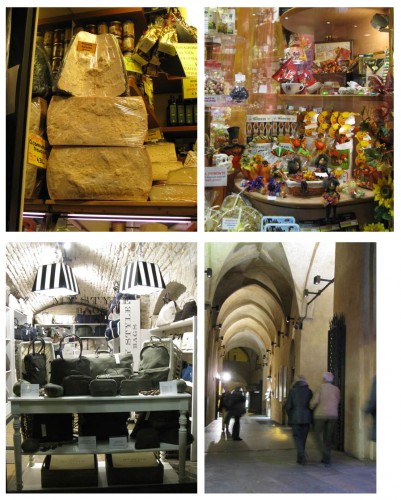
We wander through the arcade underneath the old Palazzo Del Raggione, and in one shop we buy some buttons and elastic–elastic so we can affix large trash bags around our legs like galoshes when we next head to Venice, which is having Aqua Alta (high water) episodes. In travel, your mind is lingering on what you’ve seen in the last place, and thinking about what you’ll see in the next.
We knew there was an old old university here in Padua, and we enter one of the courtyards of the buildings. The tours are not when we can tour, so we content ourselves with what we can see of the buildings, and enjoy the energy of the young around us. The students are all around us in the town.
We found our way to a marginal restaurant–more like a cafeteria, and while all the displays looked nice, it was just that– a cafeteria. We walked home through the intermittent rain, tried again to get on the Internet — a joke as it is still not working — then crashed.
We walked into tow the next morning, headed for the plazas and the markets. Padua has a river that runs through it, flanked by multi-colored houses, and sporting a few ducks.
I told Dave that graves in the ground were small potatoes compared to having the Madonna statue on a bridge for your memorial, but then he pointed out to me that there was no place to put the flowers, and wouldn’t you want flowers at your tombstone? I thought to myself: Have you seen our graves? Slanted? On a hillside? All the flowers will roll down the hill.
Perhaps it was the rainy weather than put us in such a grave mood, but we continued on.
So this must be a civic-style heartbreak. You pay tons of money to have your old church fixed up with new plaster and all, and then there’s an earthquake that leaves big cracks in the facade.
Morning newspaper. Something to do with cell phone photos and a vendetta and a sexy announcement. Because we are reading the Guido Brunetti series, we immediately think of our Venetian detective and his wife, reading these newspapers.
We are here at Piazza della Frutta, as so are the vendors. The big building overlooking the plaza is called the Ragionne Palace, but is now empty. We notice that it is mostly vegetables and fruits on this side, we head to the other, to Piazza della Erbe.
We dive in. I’d been moaning to Dave that I hadn’t purchased an Italian purse this trip, so guess what? He found me one. And then a leather tote to go with it. Cheap. The guy said that they were made in a factory just down the road. Near Padua. We joked that perhaps they used Chinese labor to keep the prices so low.
This is the view of the market from above, on the balcony of the Palace. Everything’s a little gray, a little soggy.
Those hairy things in the lower right are chestnuts, still in their covering. Everything in this market was so alluring, in terms of wanting to take it home in a cloth bag to a small apartment and cook up some fabulous feast somewhere.
I fell in love with the little strawberries in the lower left corner, and did buy one of those rosy pears in the upper left. Yes. It was amazing. I’ve noticed that in many dishes we’ve tried thus far, there are fewer ingredients, but they are higher quality. Take the tortellini en brodo that we had that first rainy night in Bologna. Three ingredients: tortellini, broth, cheese. But it was delicious. I’ve since made it since coming home and it’s easy and good, provided you use high quality ingredients.
We can see that the walkway above us in the palace has some pretty ornate decoration and we try to climb the stairs to see it. A bulky man starts motioning with some agitation that we cannot come in, and then he makes a circular motion with the other arm. Go around, we wonder? But we’ve been on the other plaza and didn’t see any entrance. But he is adamant. No one is going up there.
So we leave the area, trying to walk around. We rejoice! Sun! Bliss! Better photographs!
Some sights while “walking around.”
We made our way to Palazzo Bo, which apparently was the “way around,” and its Palazzo Moroni. I kid you not. The architect Andrea Moroni started building this area in 1541, with a courtyard, symmetrical staircases and lots of portico, columns, arched doorways and most importantly: the “way in.”
That’s a statue of Moroni there in the front on the pedestal.
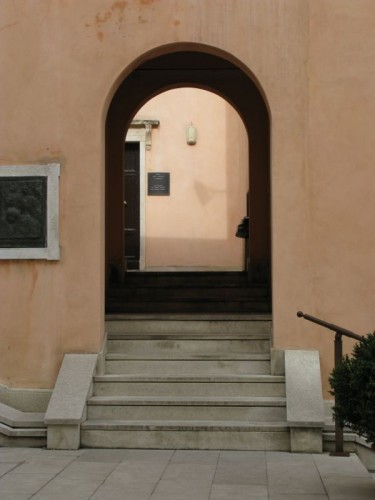 Doorway at the landing of the stairs.
Doorway at the landing of the stairs.
We pay our money, and they let us into this giant hall, with a roof shaped like a ship’s keel–upside down. There used to be frescoes by Giotto here, but first the building burned (then was reconstructed) then a hurricane blew the roof off (which was then reconstructed), but by then the original frescoes were too damaged to be saved. At one end is a giant wooden horse, placed here in the early 1830s, modeled after the Donatello horse at St. Anthony’s. (Which we could not see because it was “in renovation.”) The long display tables in the center were an electronic art exhibit of some kind, but I chuckled when I went in for a closer look and saw this sign:
Computer malfunction. Looks like we weren’t the only ones with no signal to our computers.
The walls were heavily decorated with frescoes, just not by anyone you and I would know.
The bulky guy left, others came in by this door, and we realized that’s where the beautifully decorated portico was.
The bulky guy came back and takes our photo:
He points to my water bottle in my day pack and shakes his hand no, no, no. I’m thinking that no drinks of any kind are allowed in here and now they’re going to cart me off to Tourist Jail. Then he breaks into a big grin and says “Vino! Prosecco!” We laugh, and realize that he is right. If we were Italian, we’d be drinking wine and prosecco. Hey, if we were Italian, we wouldn’t be at the market in the rain, in sneakers, carrying guide books.
One last look as we descend the staircase. We’ve traveled to many of the number one tourist sites in Italy, and are now exploring the second tier of towns and sights. We know that while this palazzo isn’t on the order of the Sistine Chapel, Michelangelo’s David, or other sights, we try to enjoy what we see here, find new ways of looking at a small town’s Big Deal.
We don’t want to miss our appointments at Scrovegni Chapel–the whole reason for coming to Padua, but I’m definitely not going to be eating in the place where we ate last night. I’d done some searching on Frommer’s before leaving and they recommended Enoteca, just in between the two plazas on a side street. We’re wet and tired and hungry and hightail it over there. This is the fall/harvest display they have in the courtyard area.
More on this restaurant in Menu II.
We see on our tourist map given to us in the train station, that there is a something or other two streets over, so we head over there. Only the small battistero (baptismal building) on the right is open so we head over there. On the interior ceiling is a giant fresco detailing the life of Christ? Anthony? I’m never too sure in this town, but of course photos aren’t allowed.
We head out, walking along streets, headed north to the area where Scrovegni Chapel is located. No, it is not lost on me that we are seeing a series of frescoes about the life of Christ, a reverential experience on Halloween.
First we check into the Visitor’s Center, attached to the Eremitani museum, containing bits of carved stonework. We had about an hour to kill, so we took a look around, hit the movie area downstairs (English version), and saw some exhibits.
The cherubs (above) are in this circle. I’m pretty antsy now, anxious to get over there, we head over in the light rain to Scrovegni Chapel (continued in next post).
